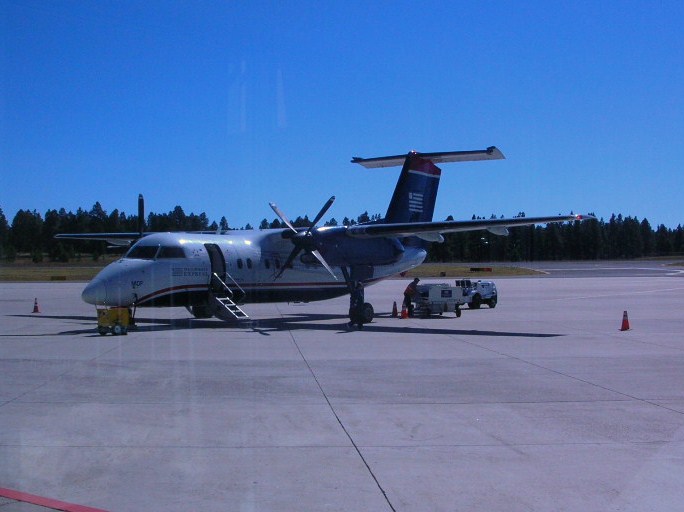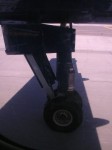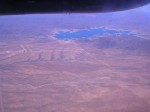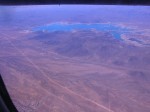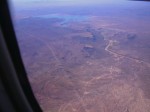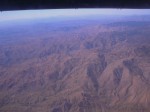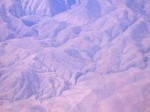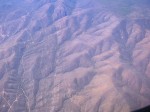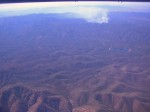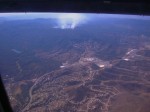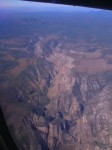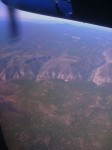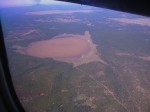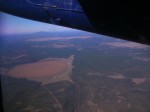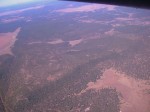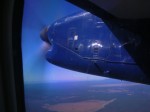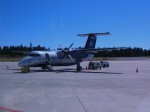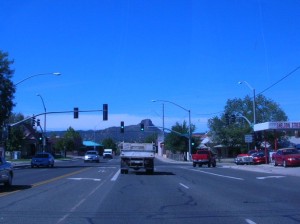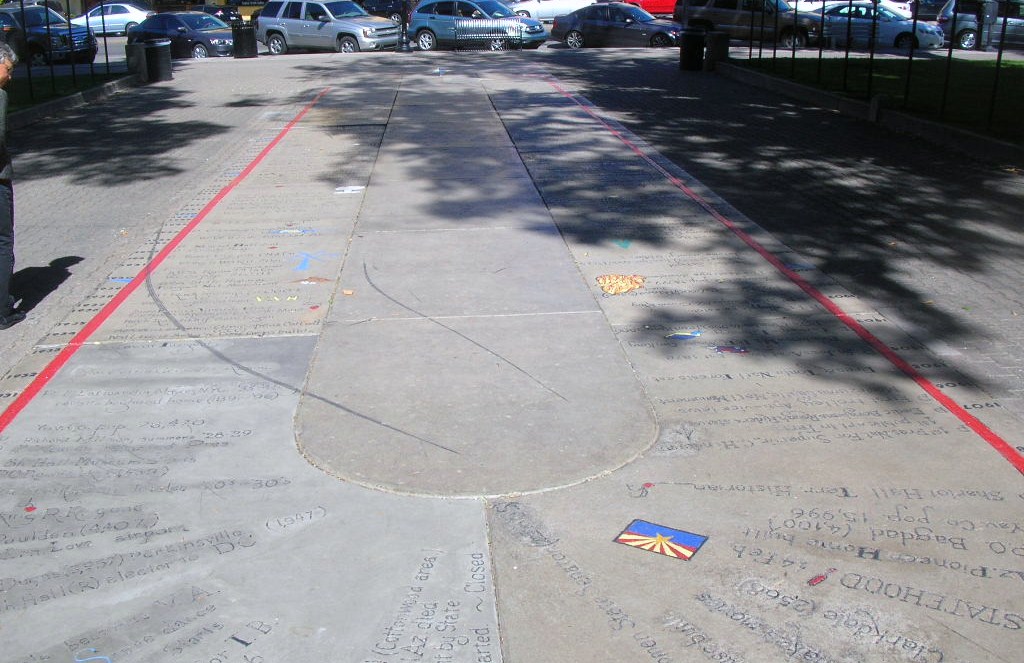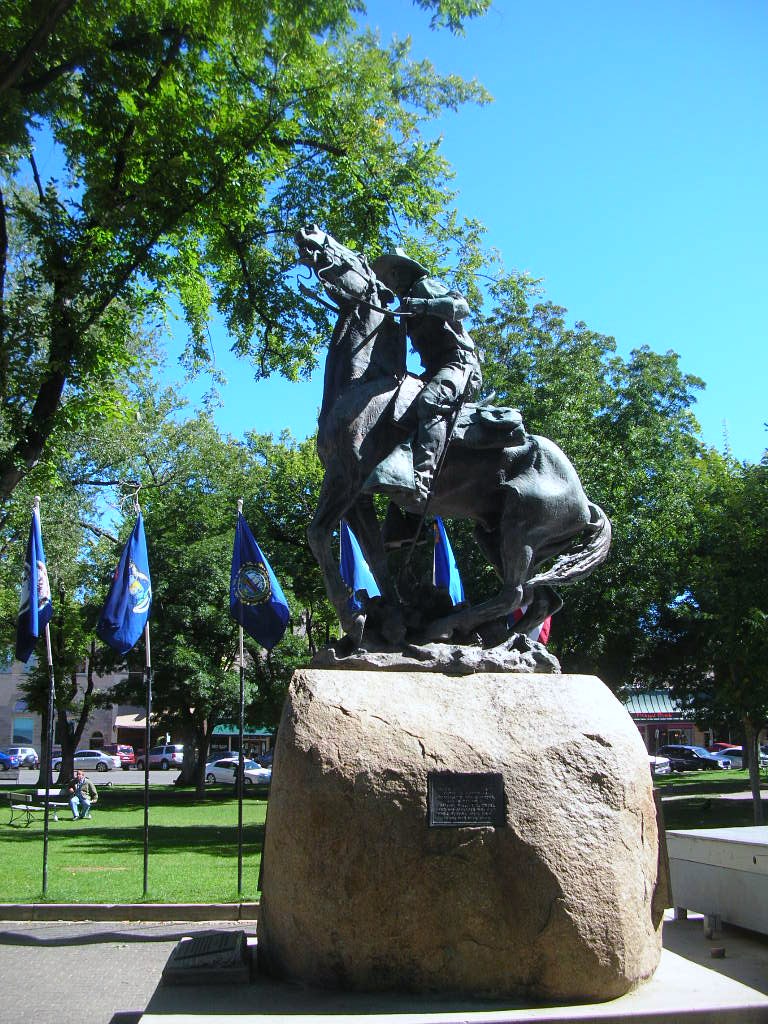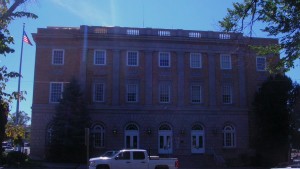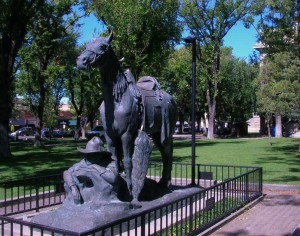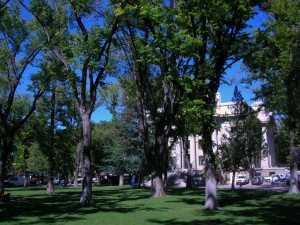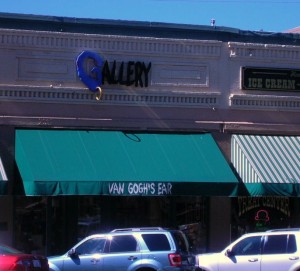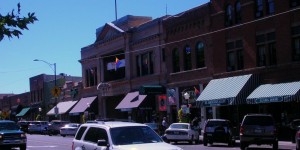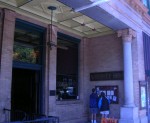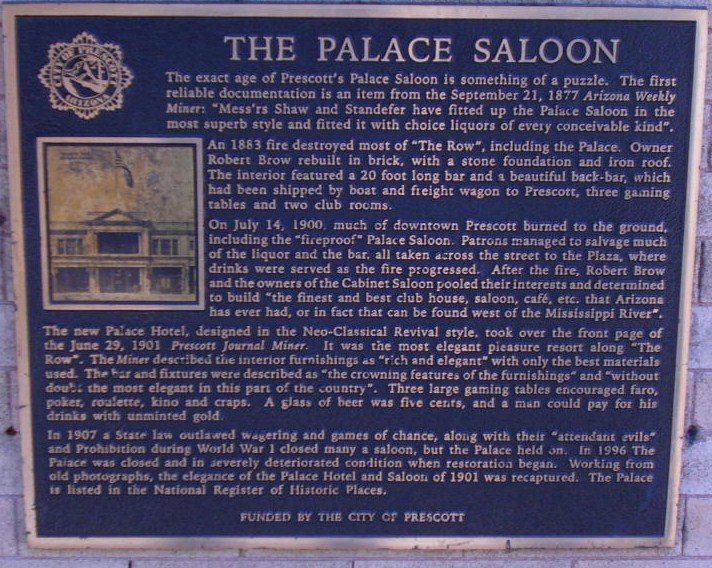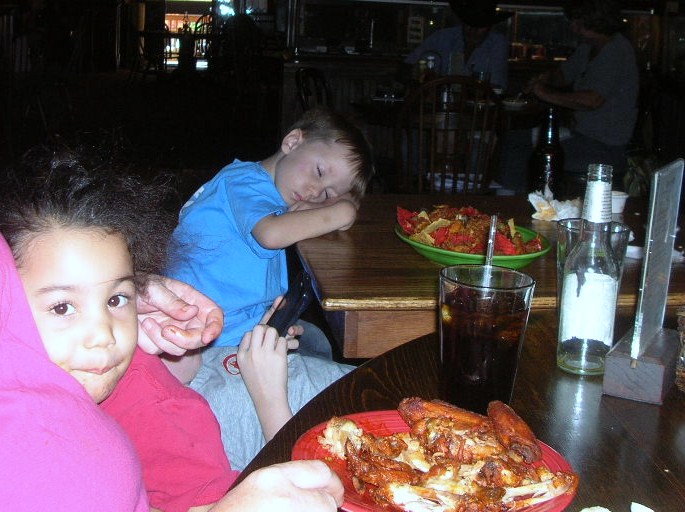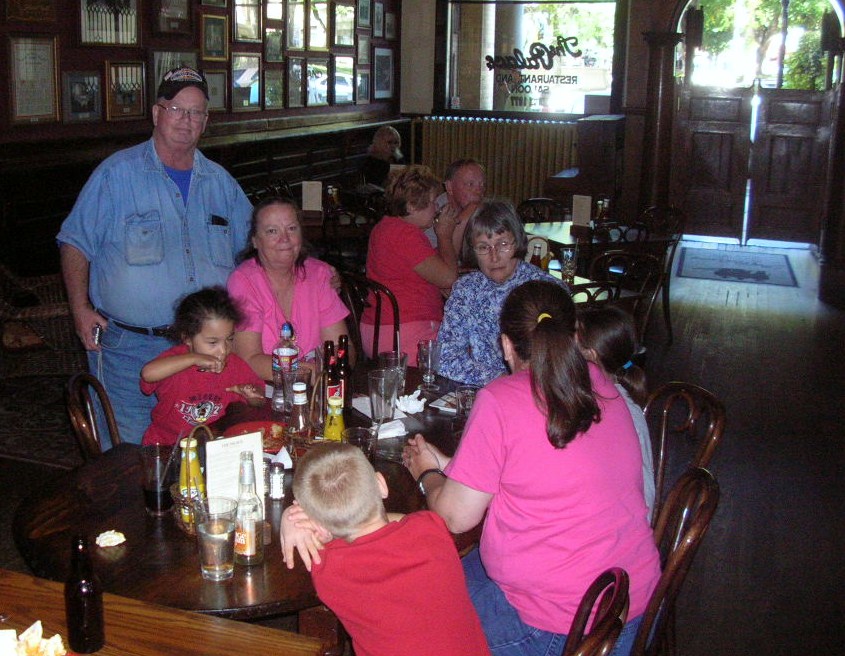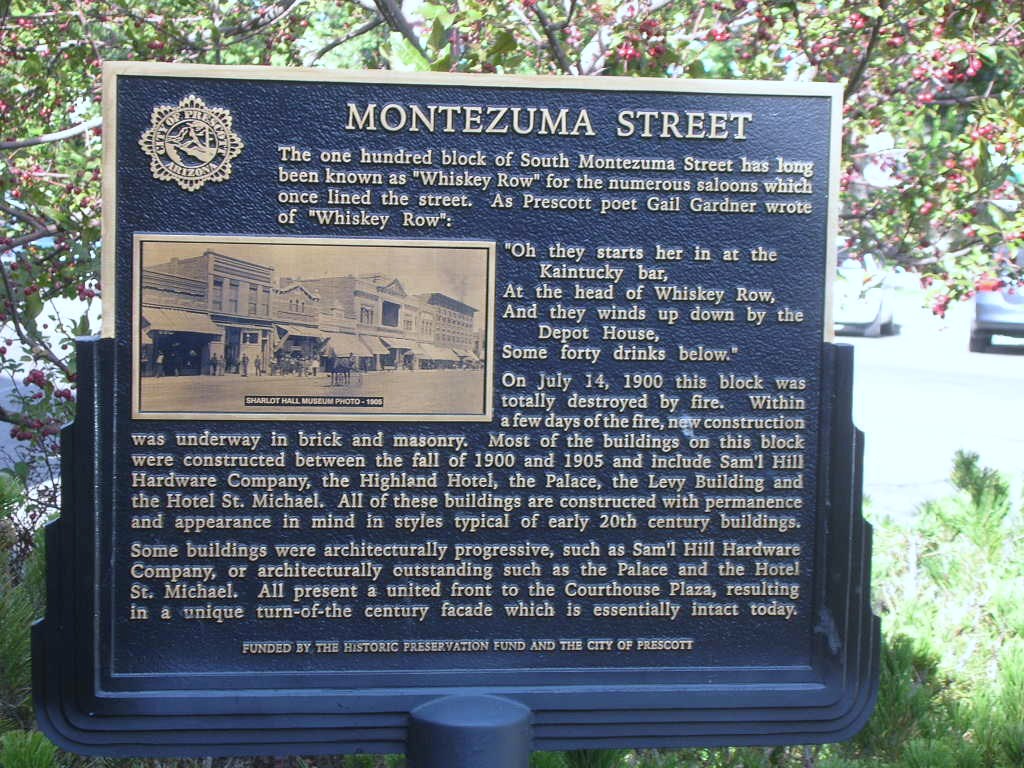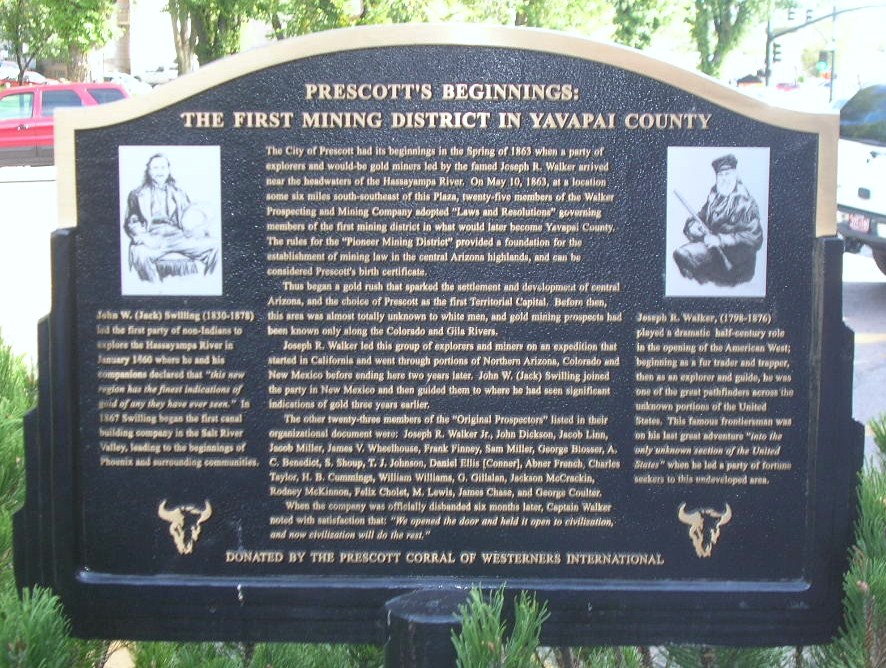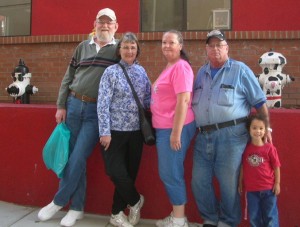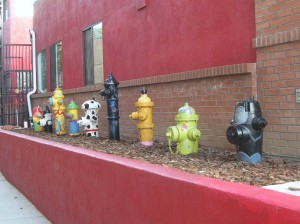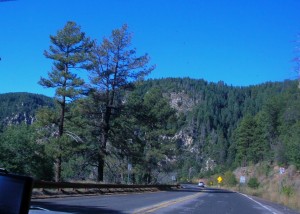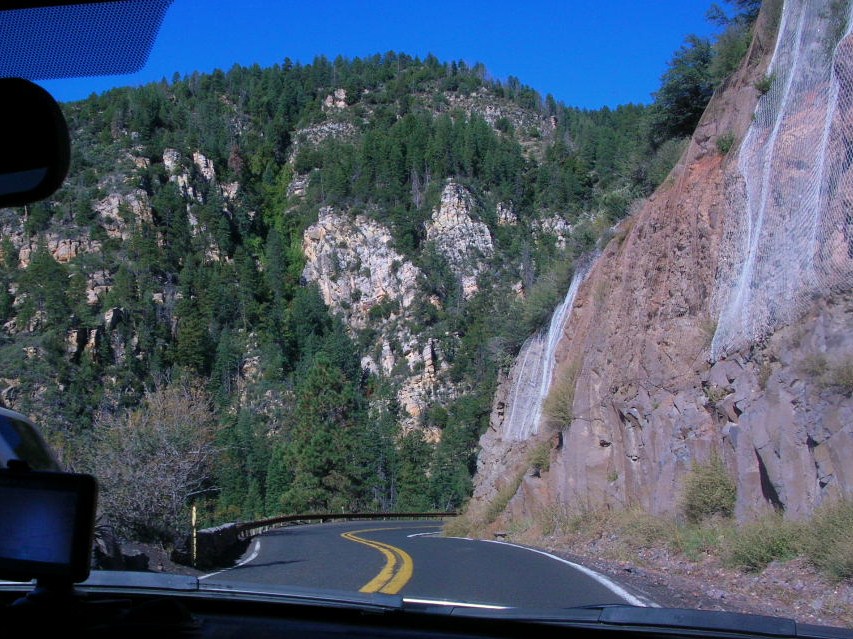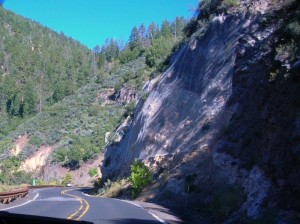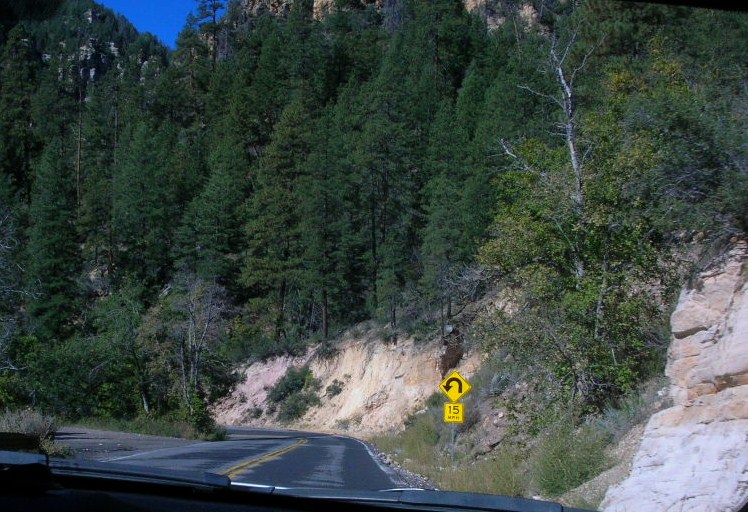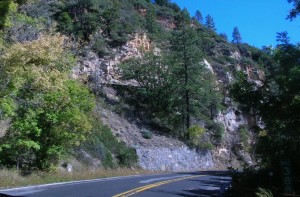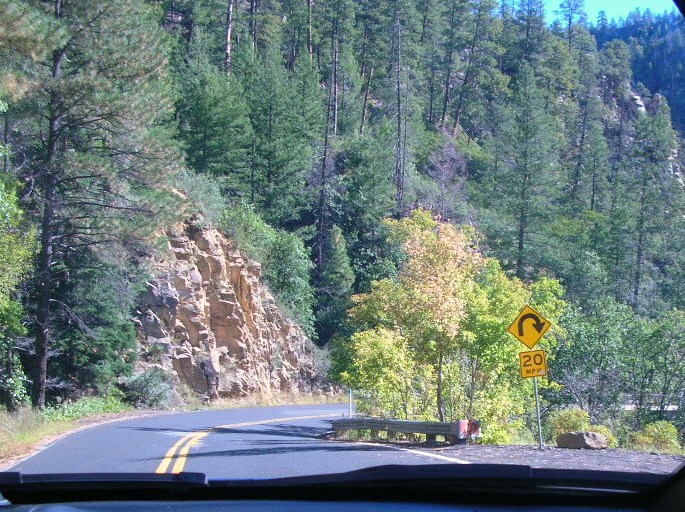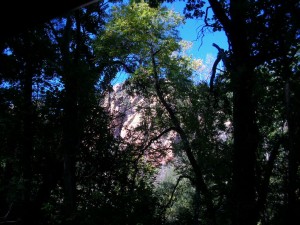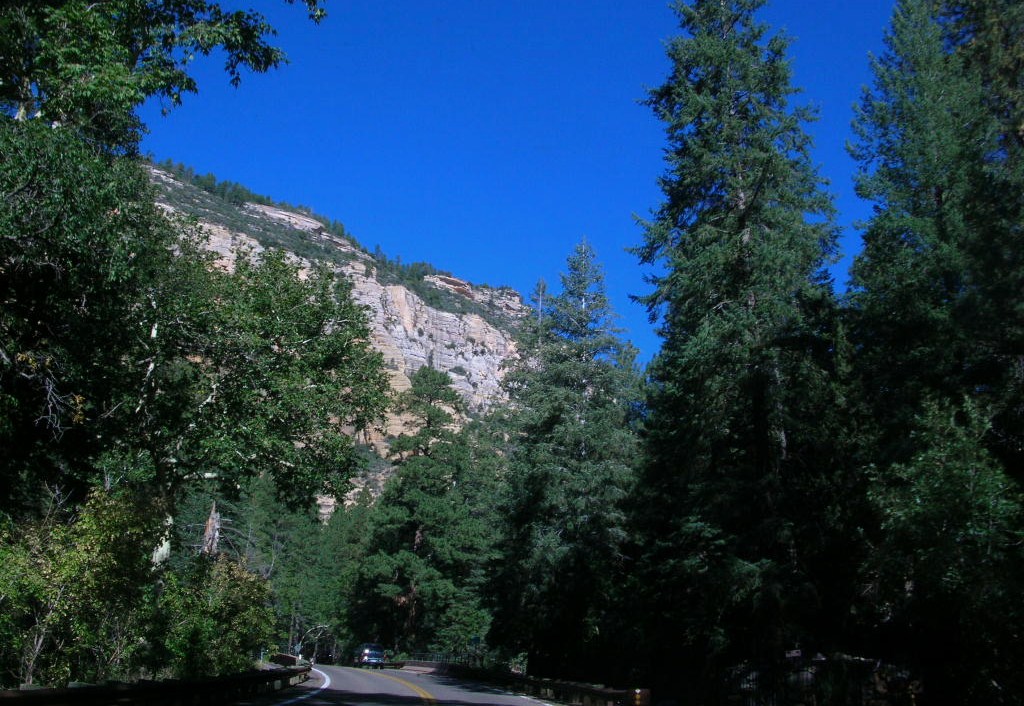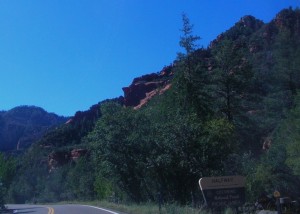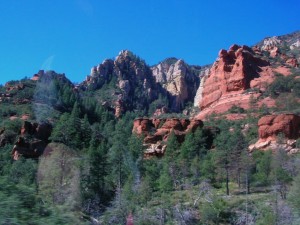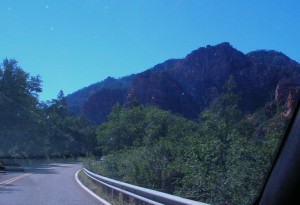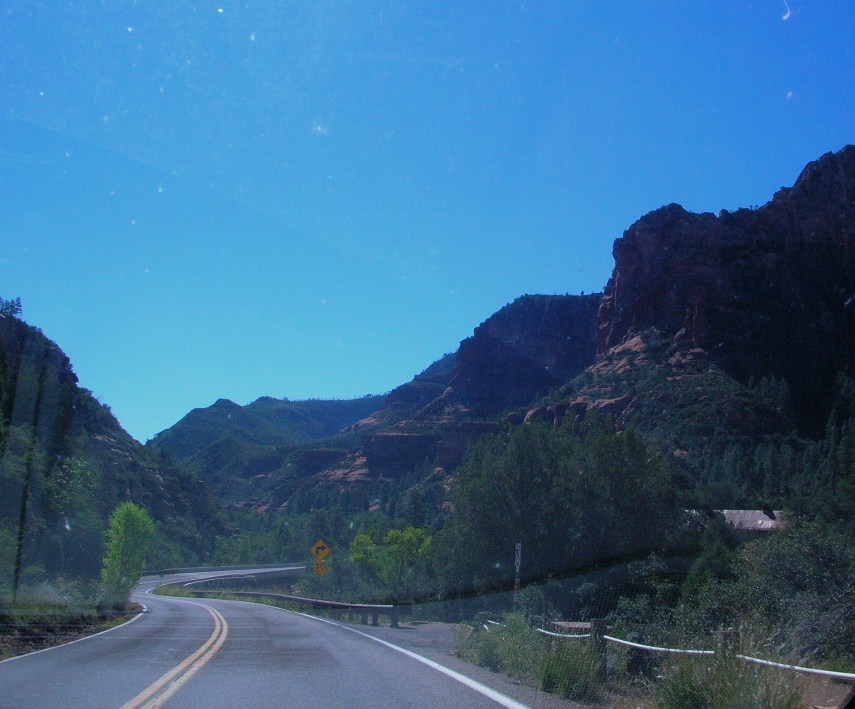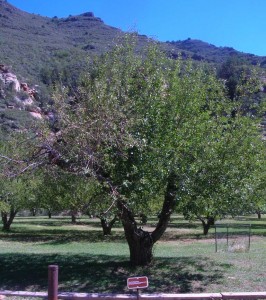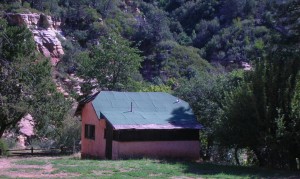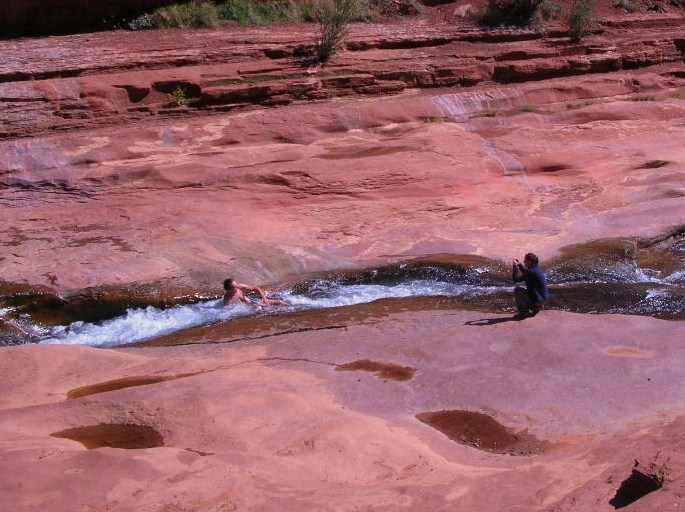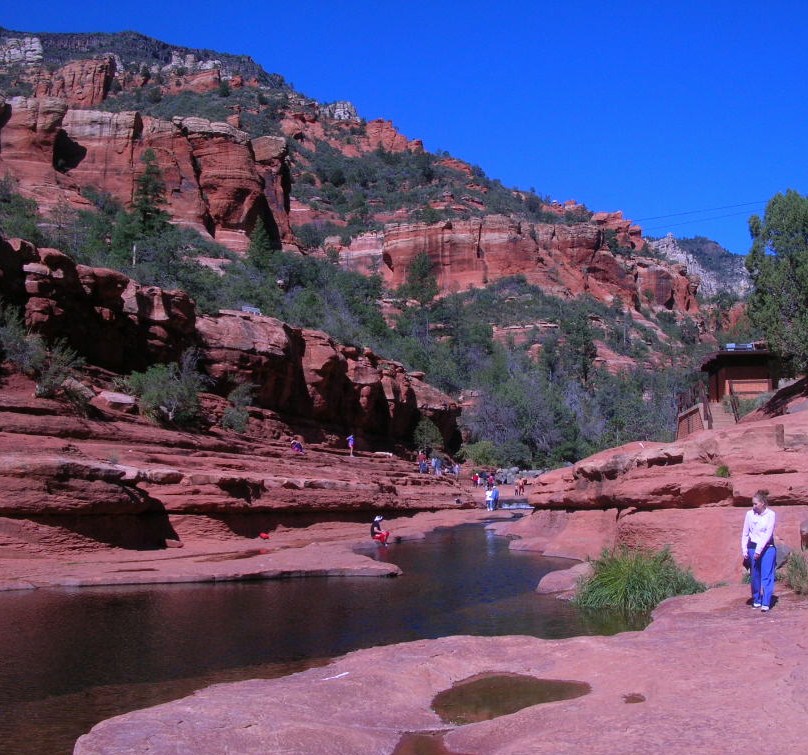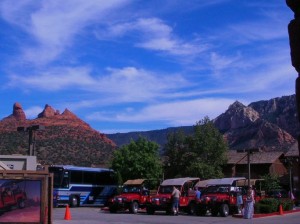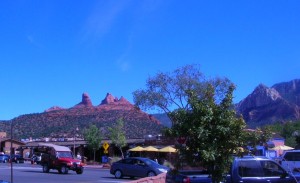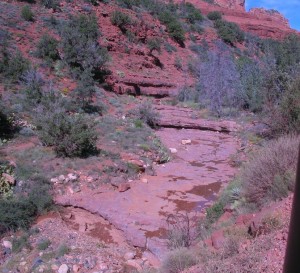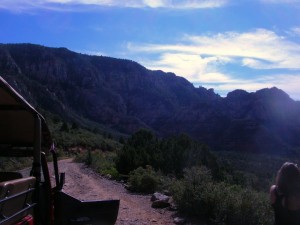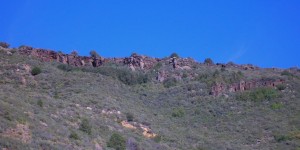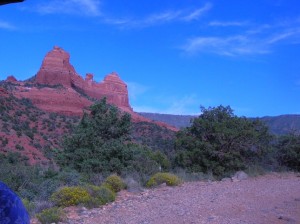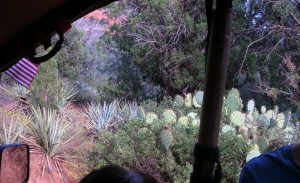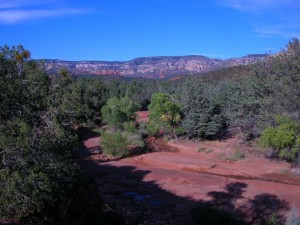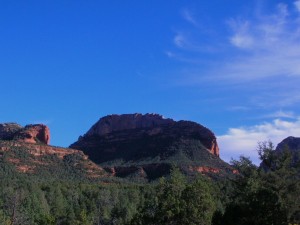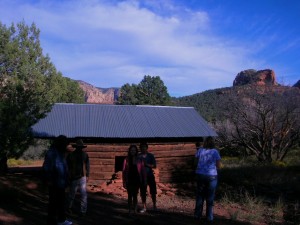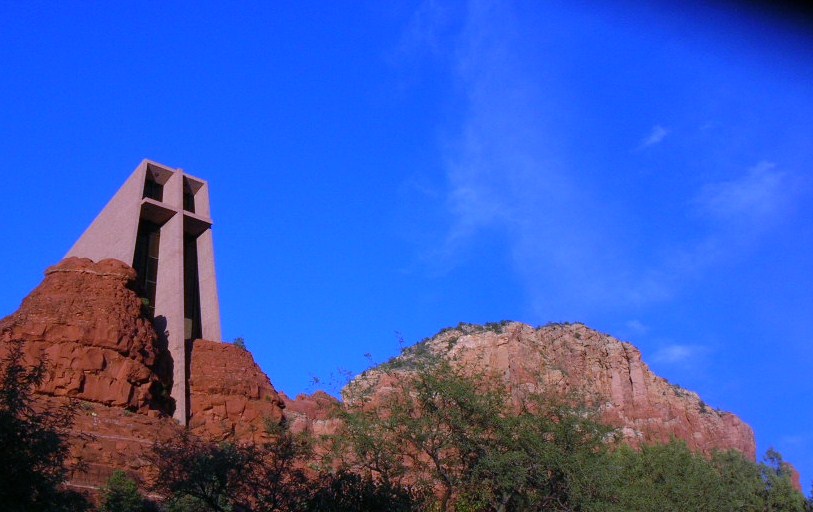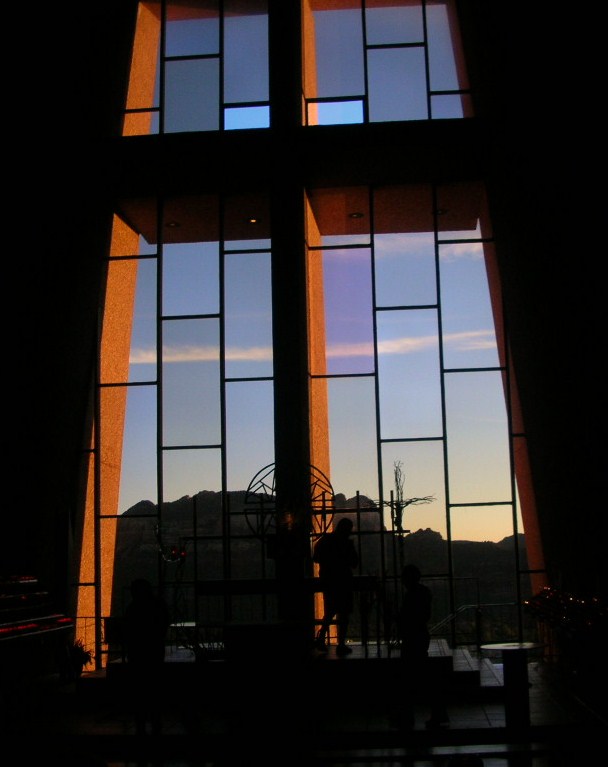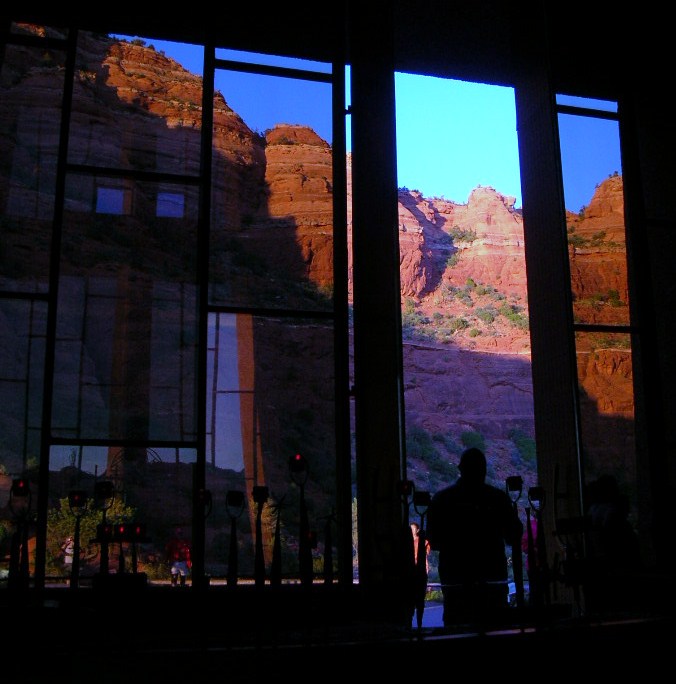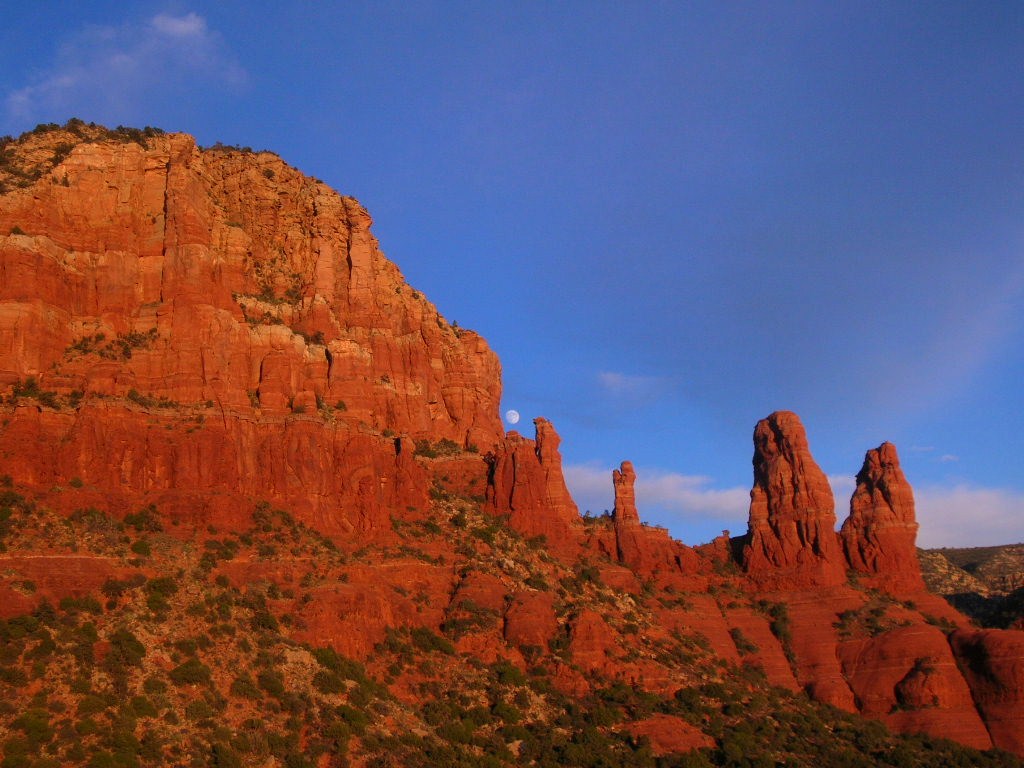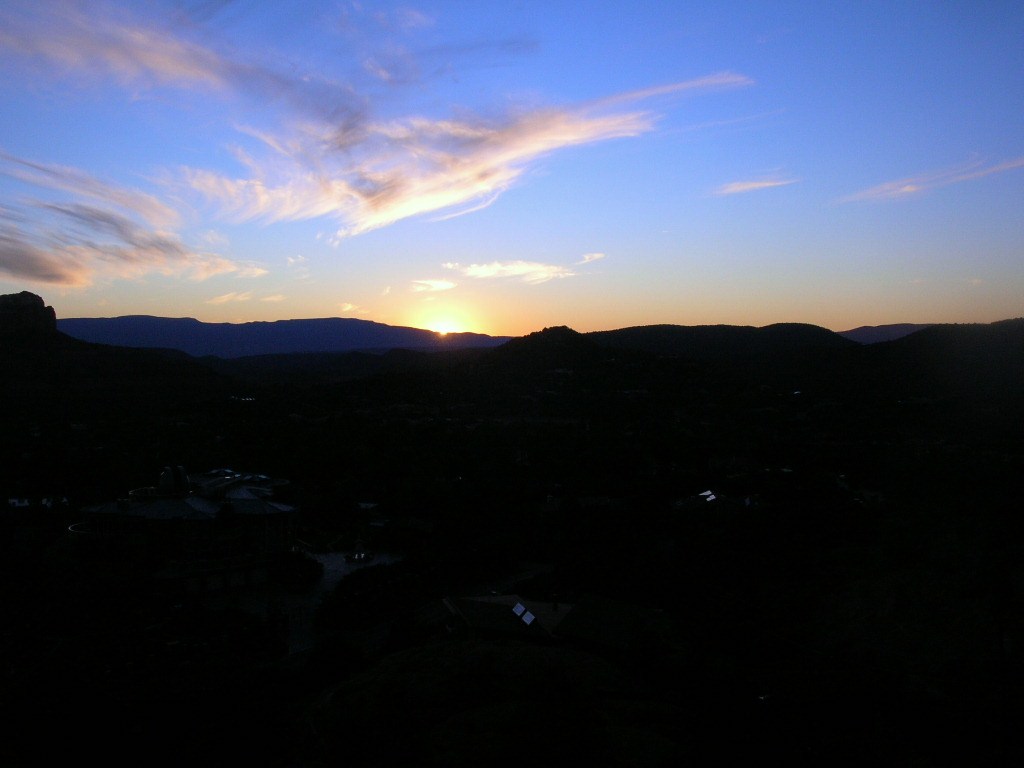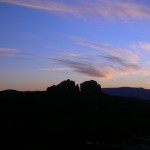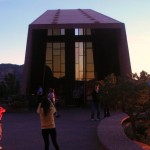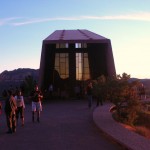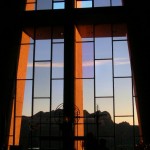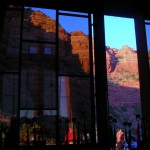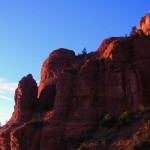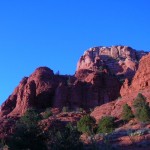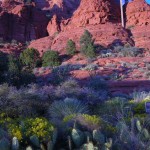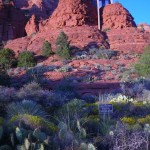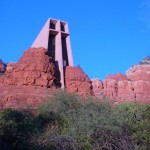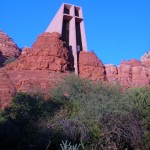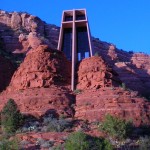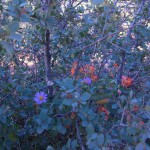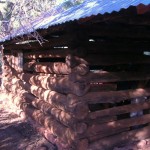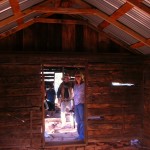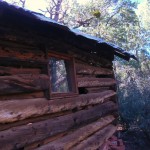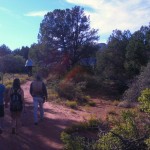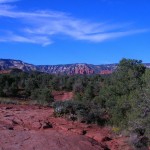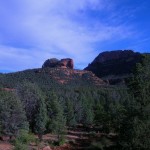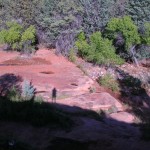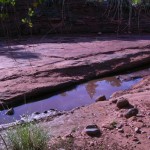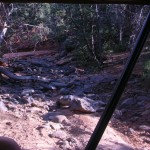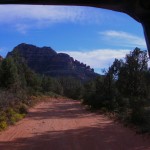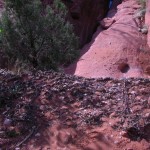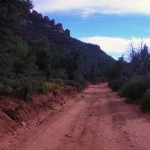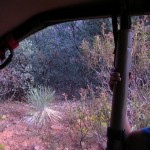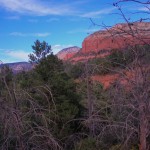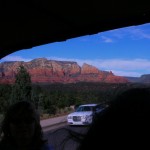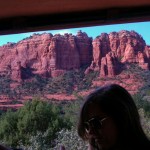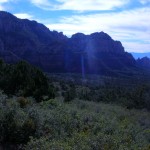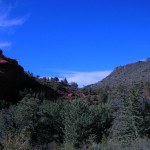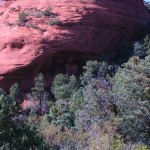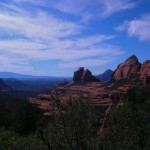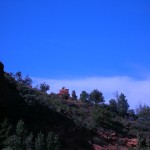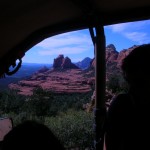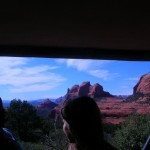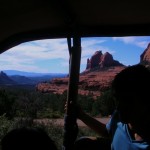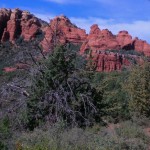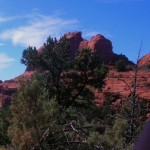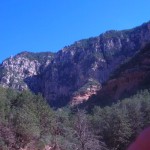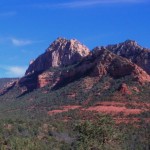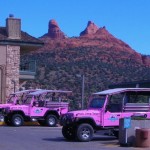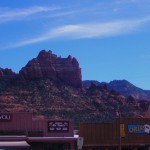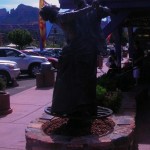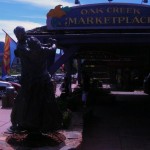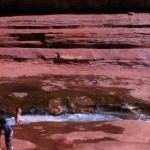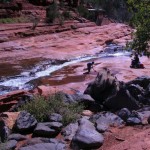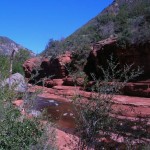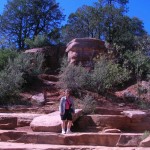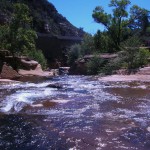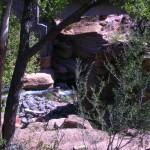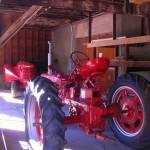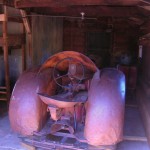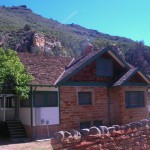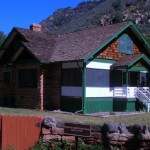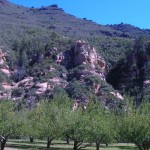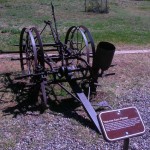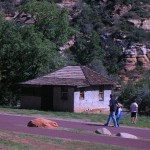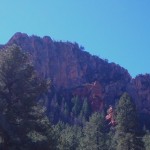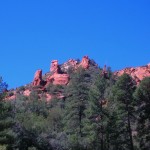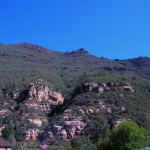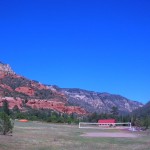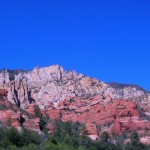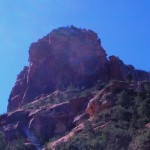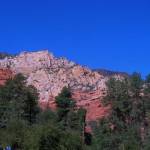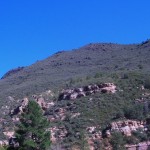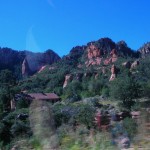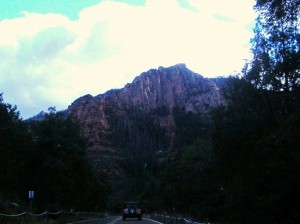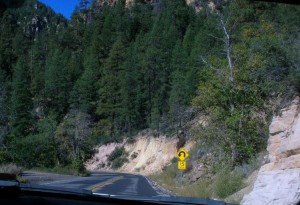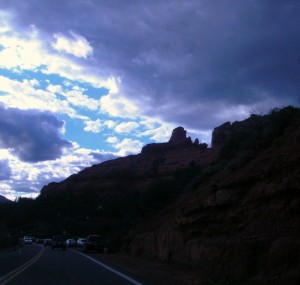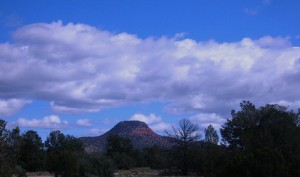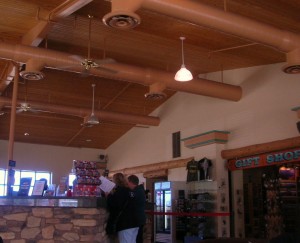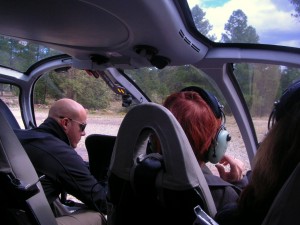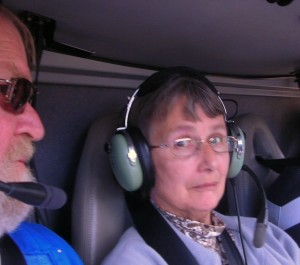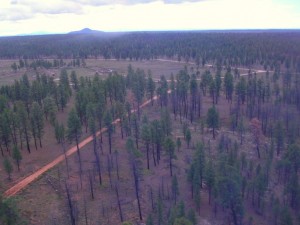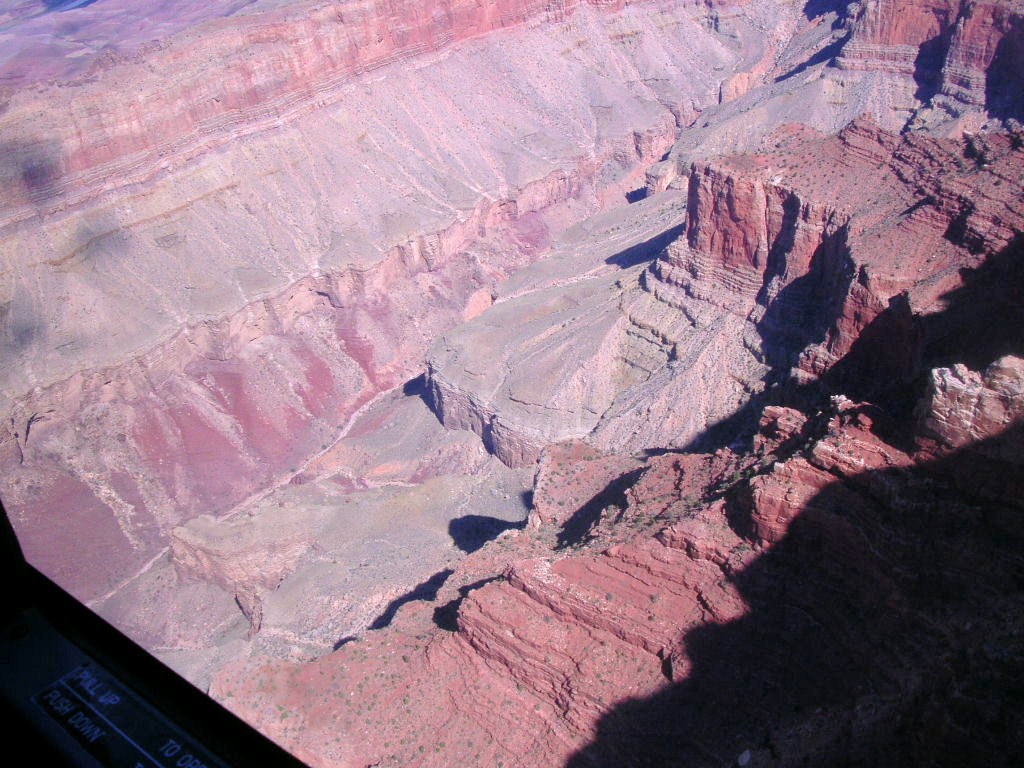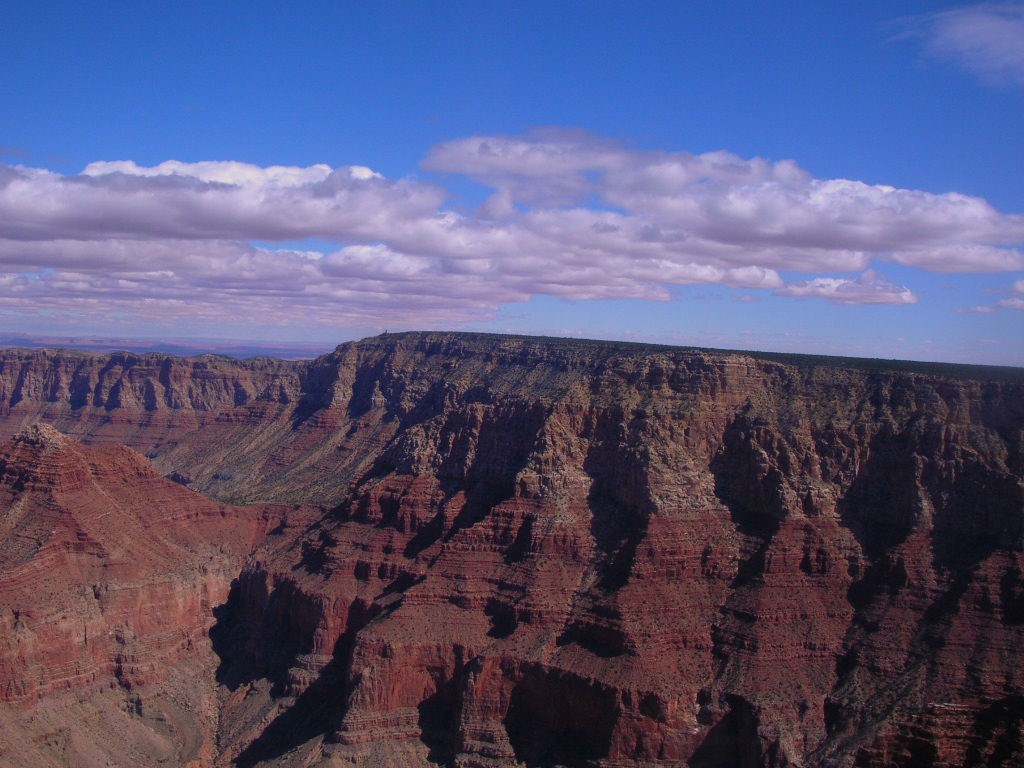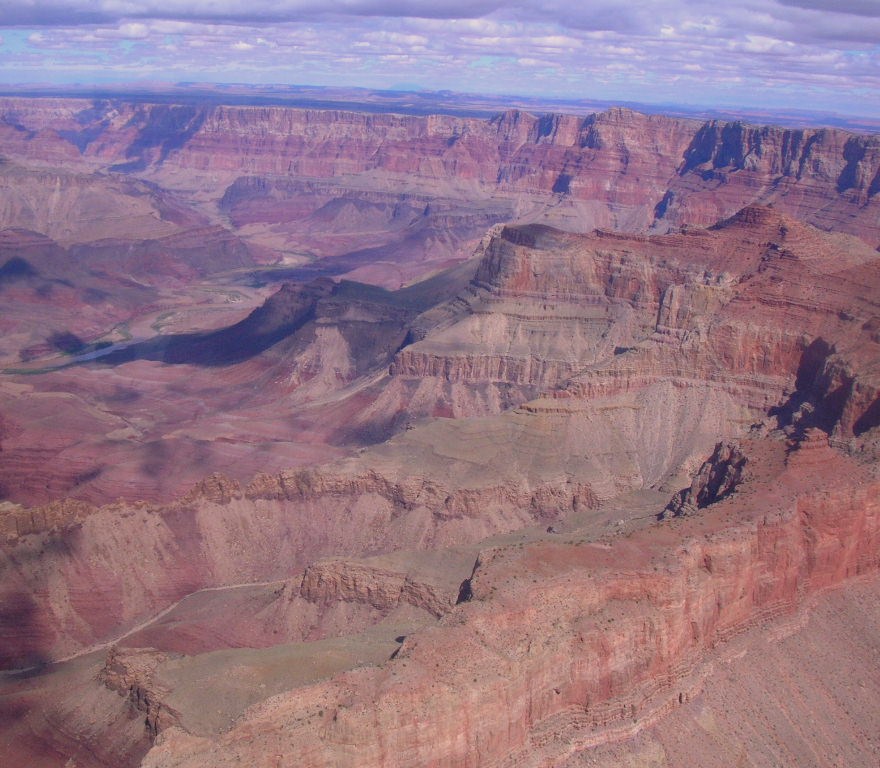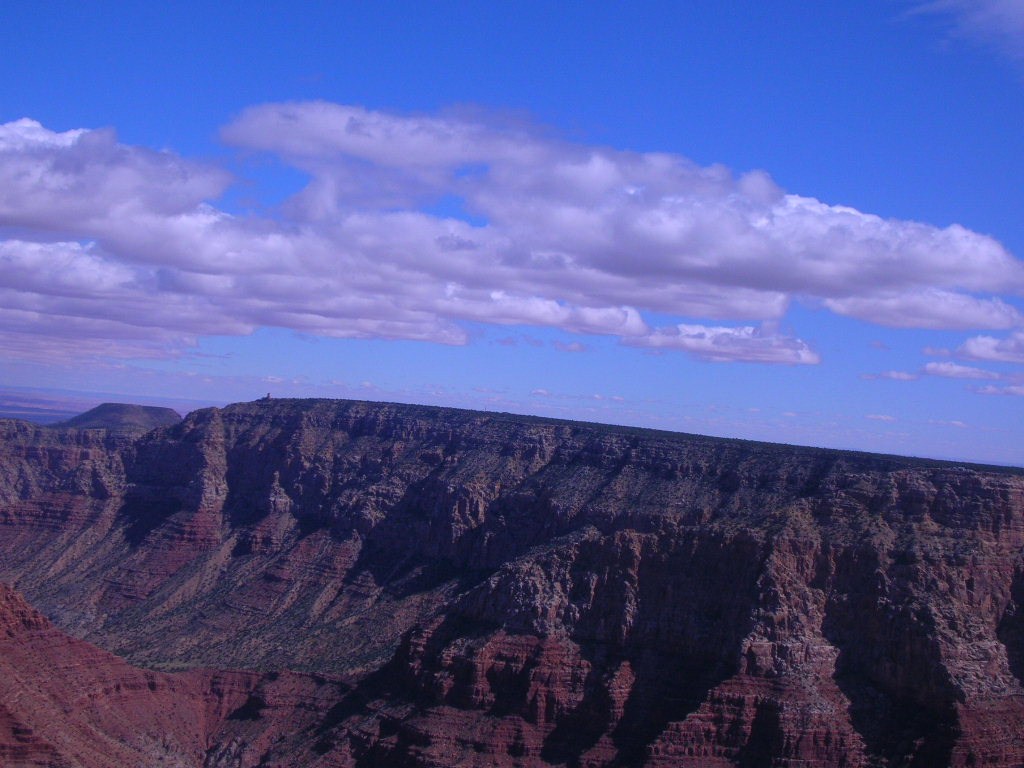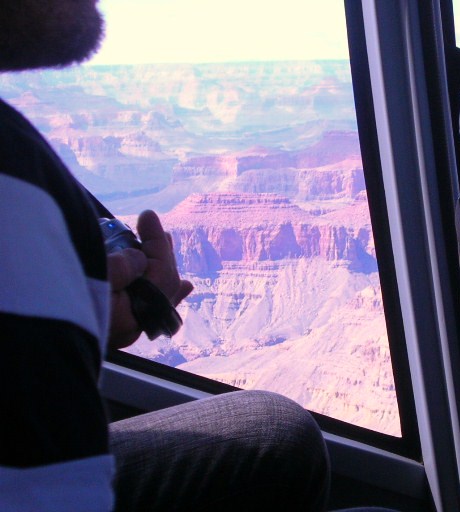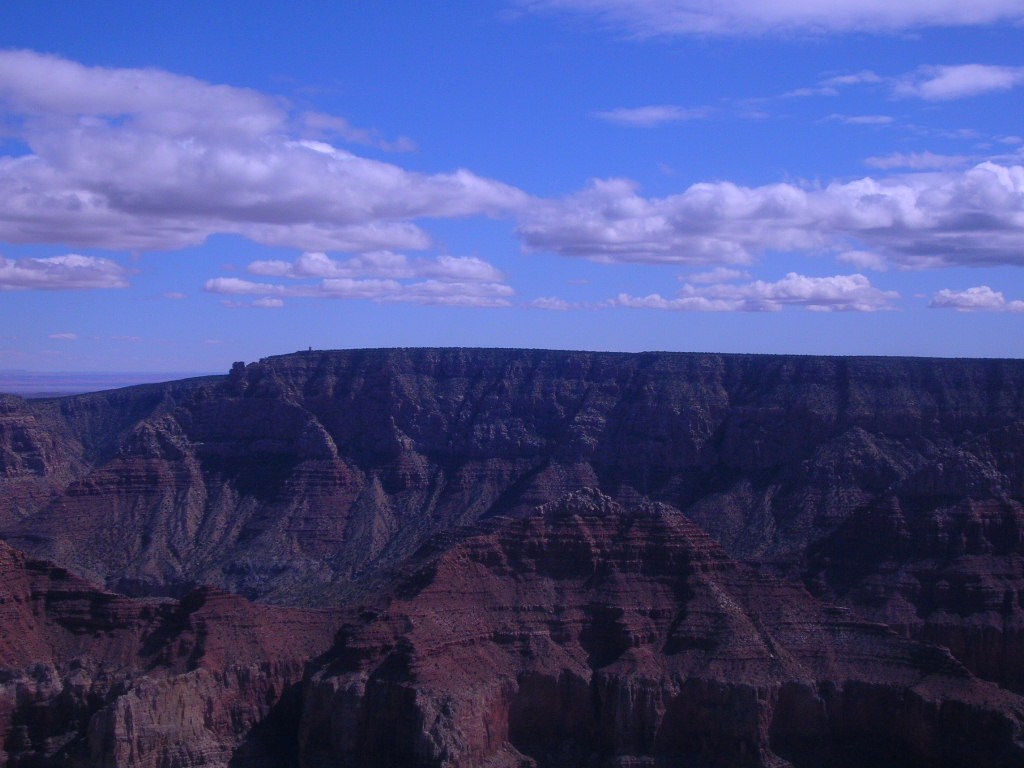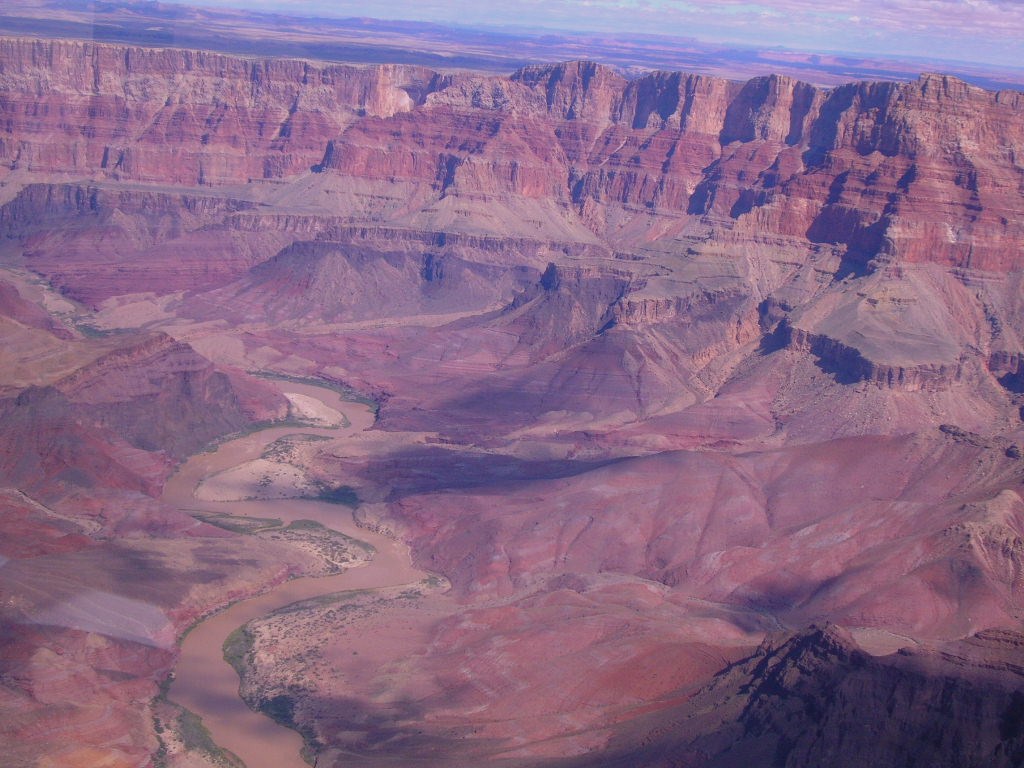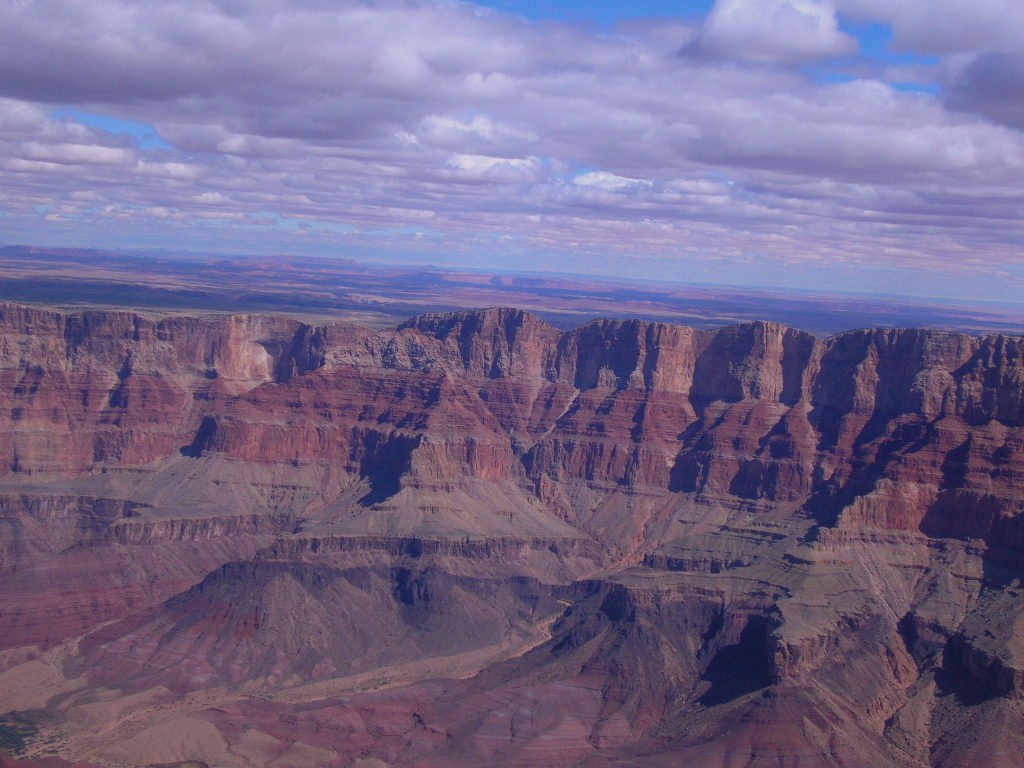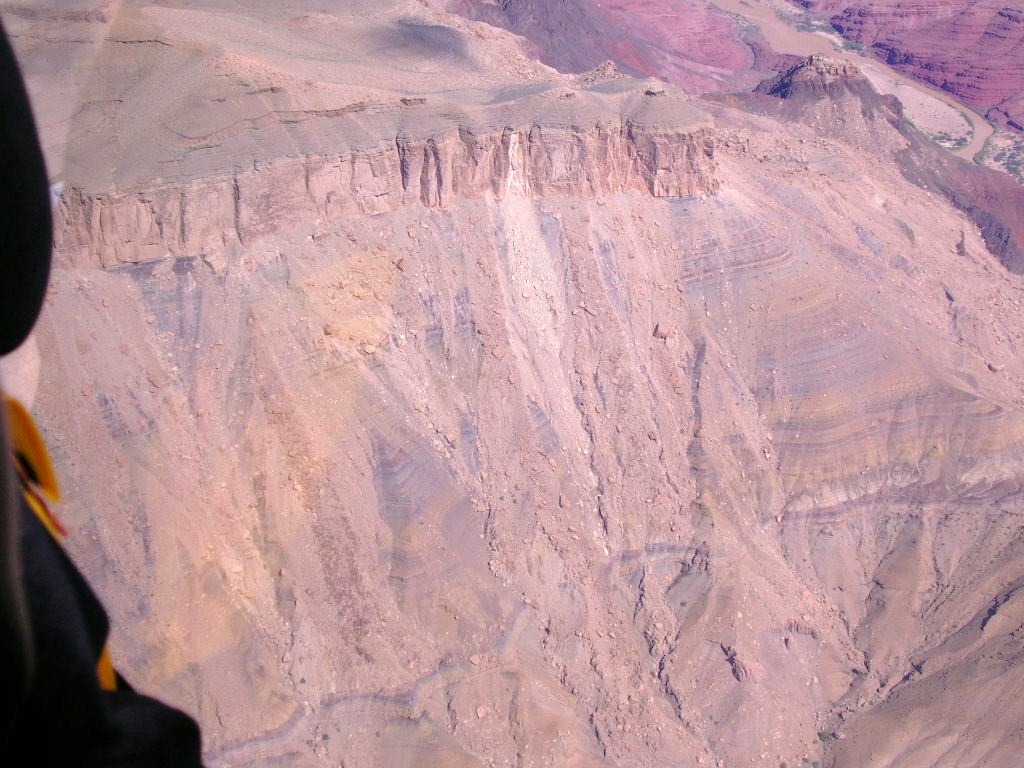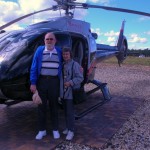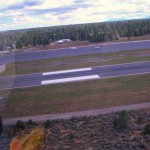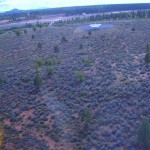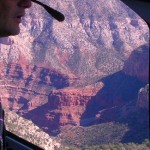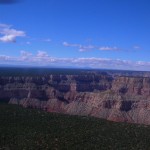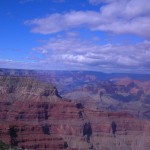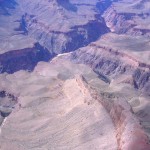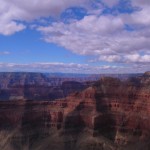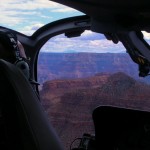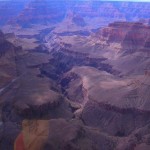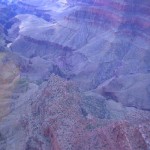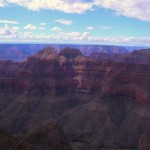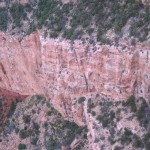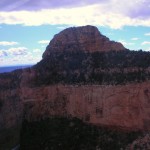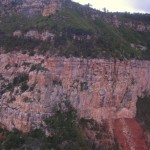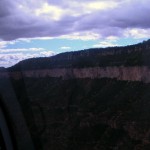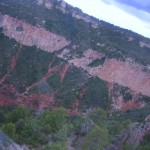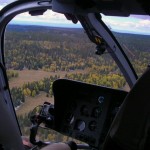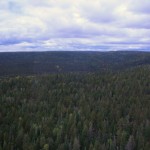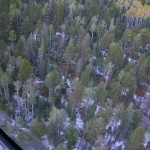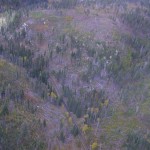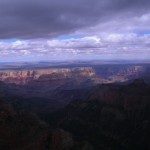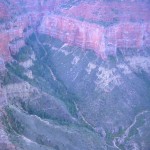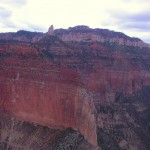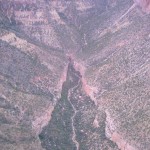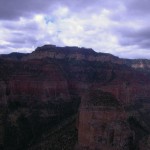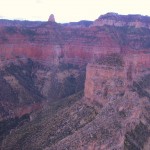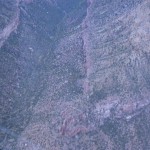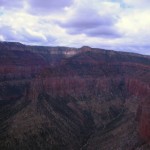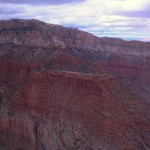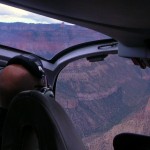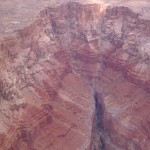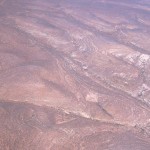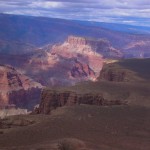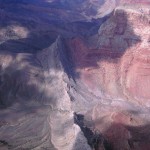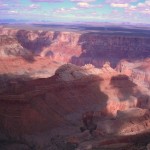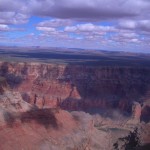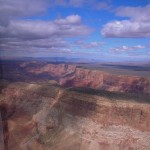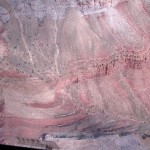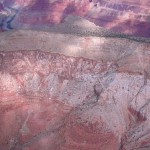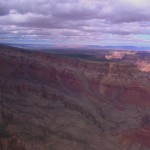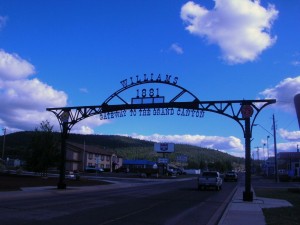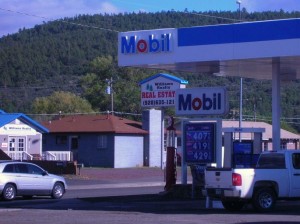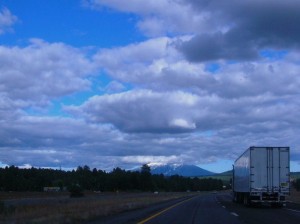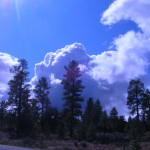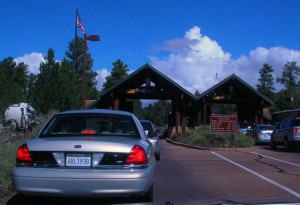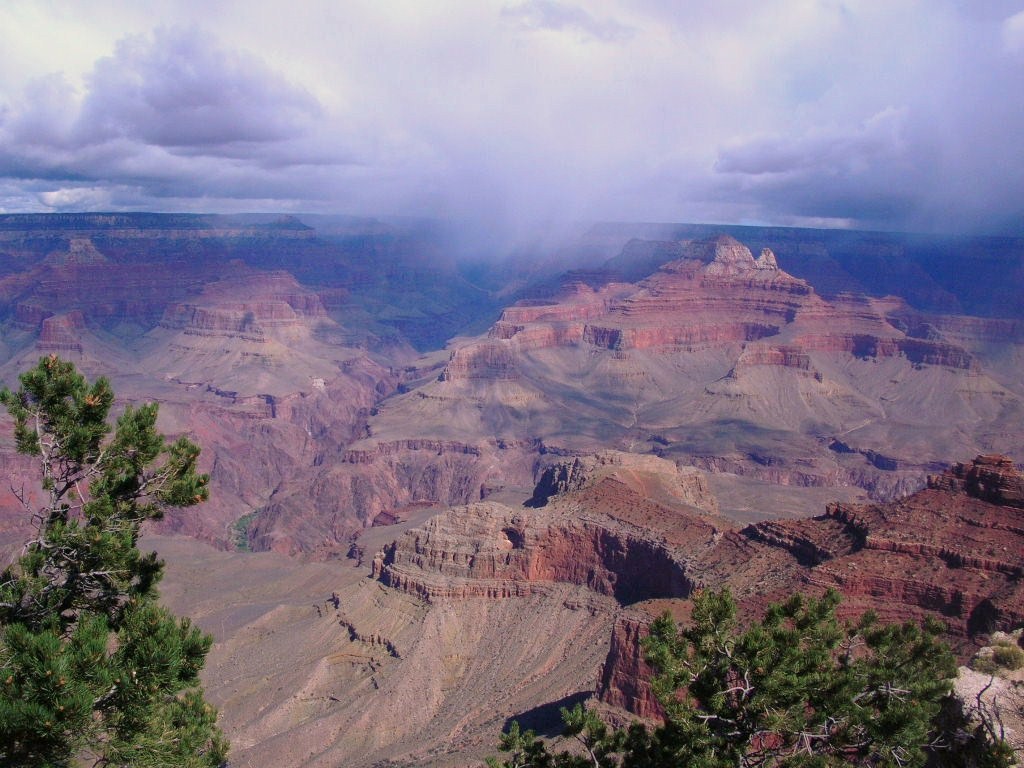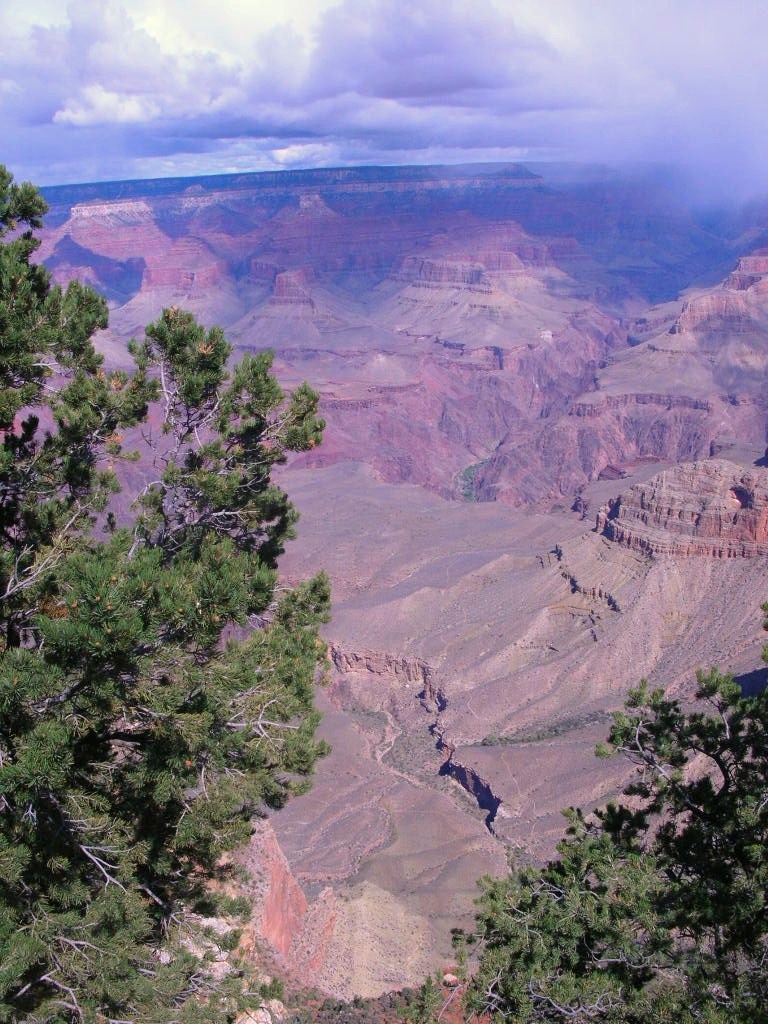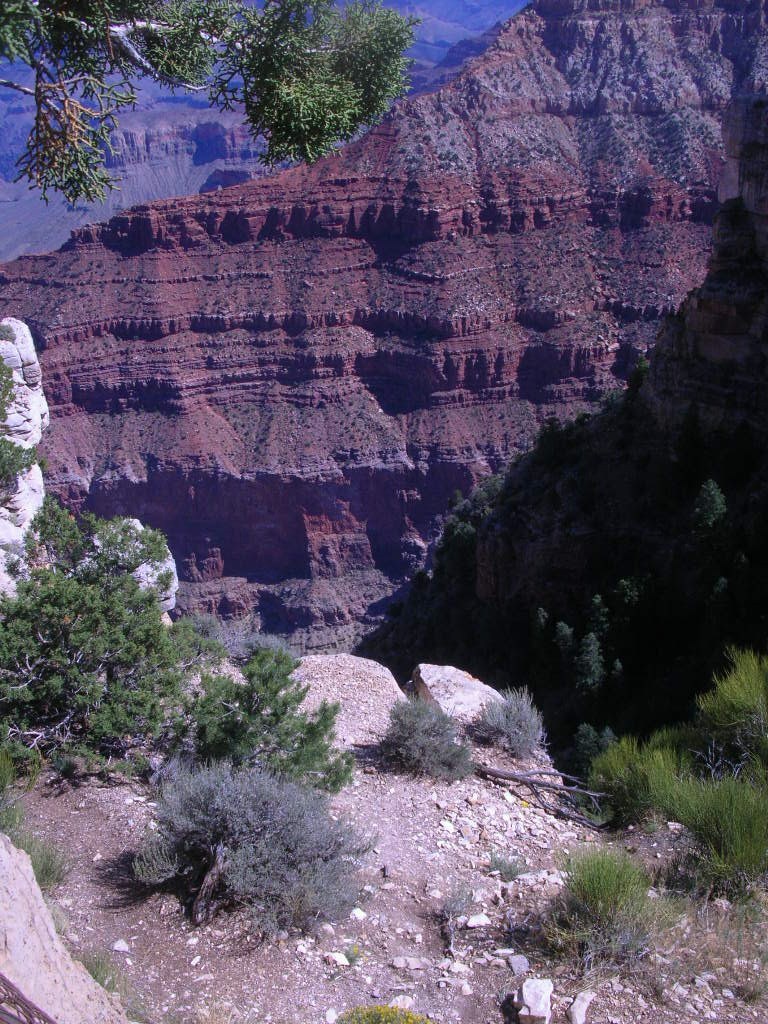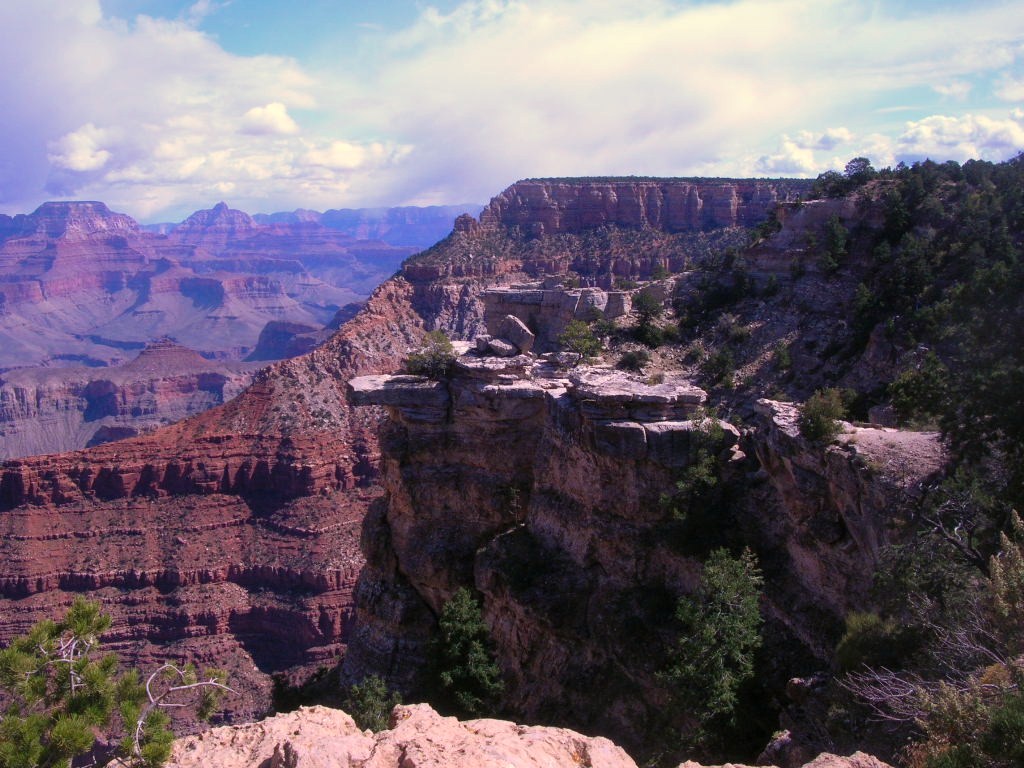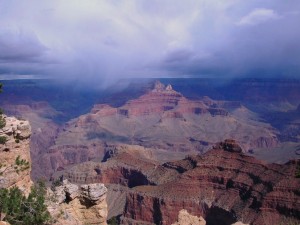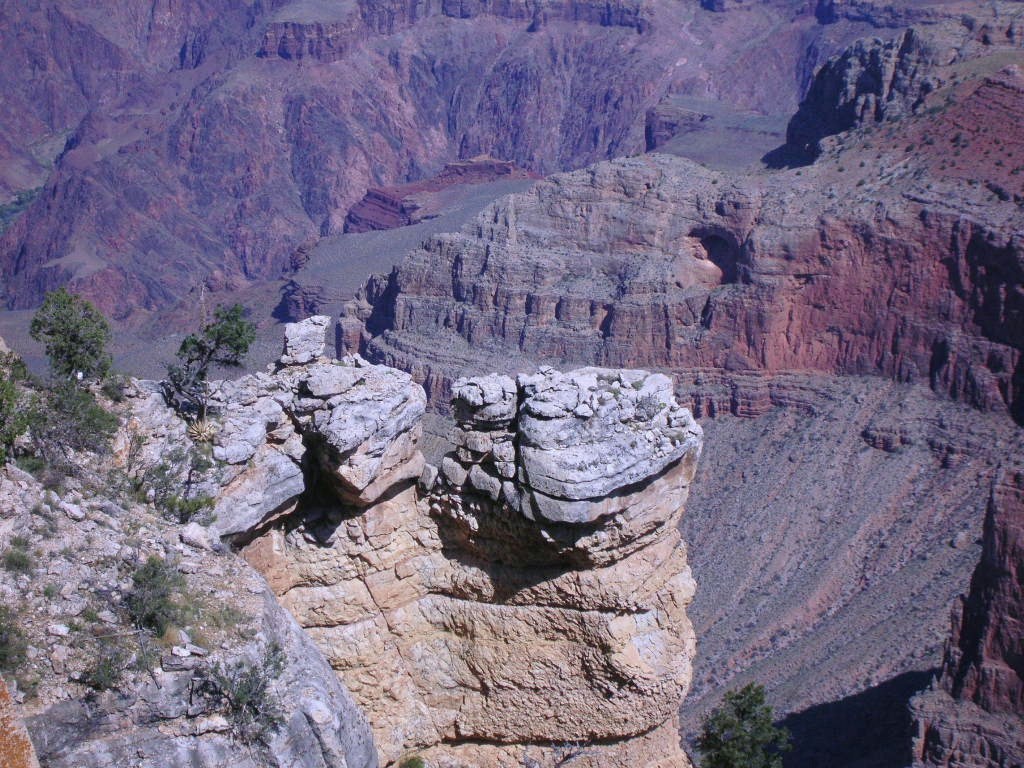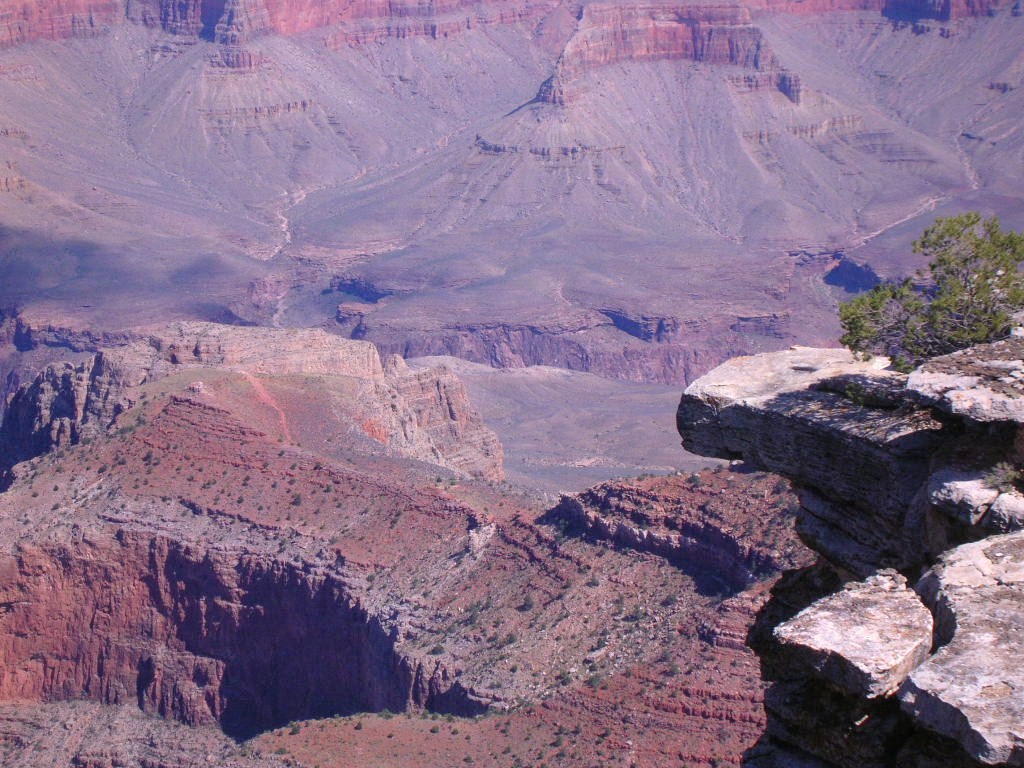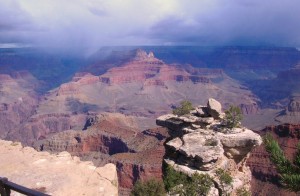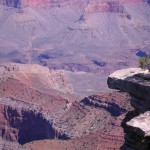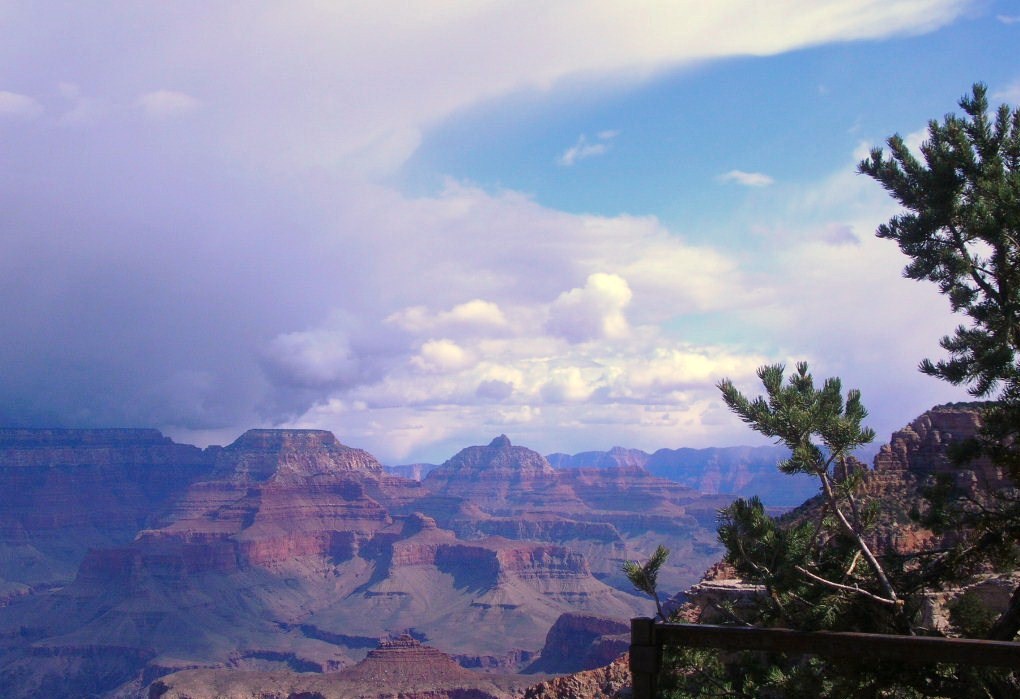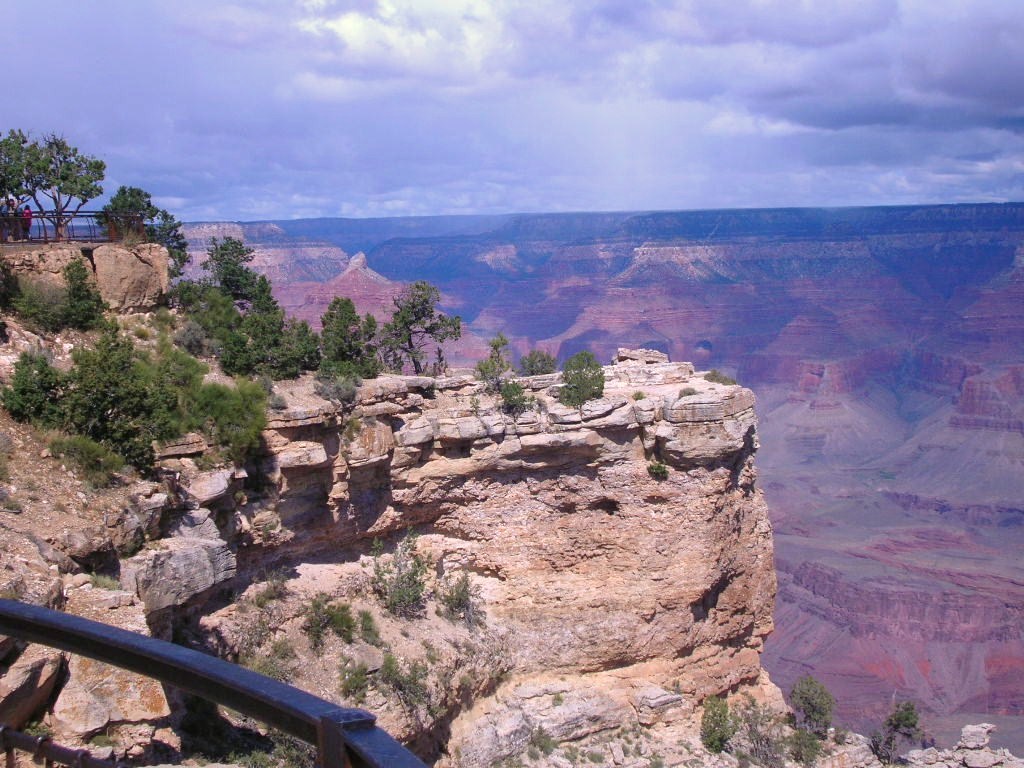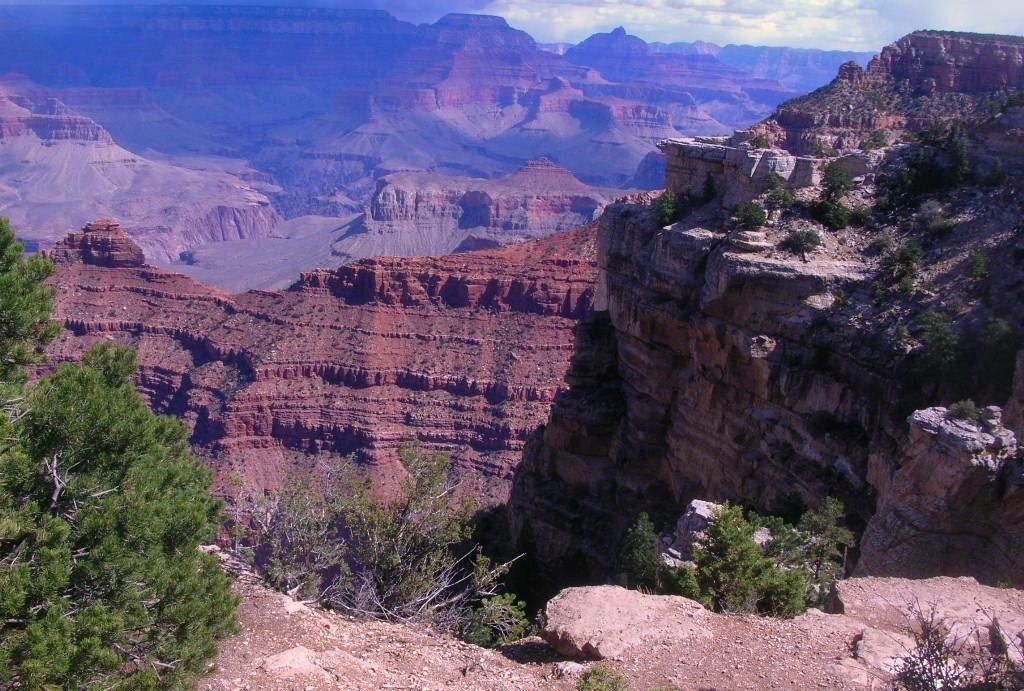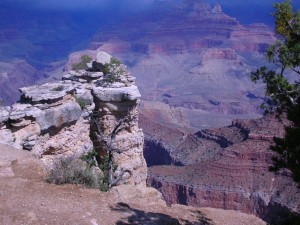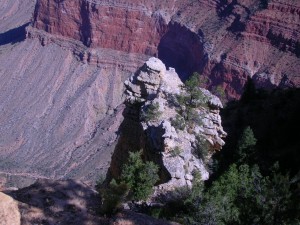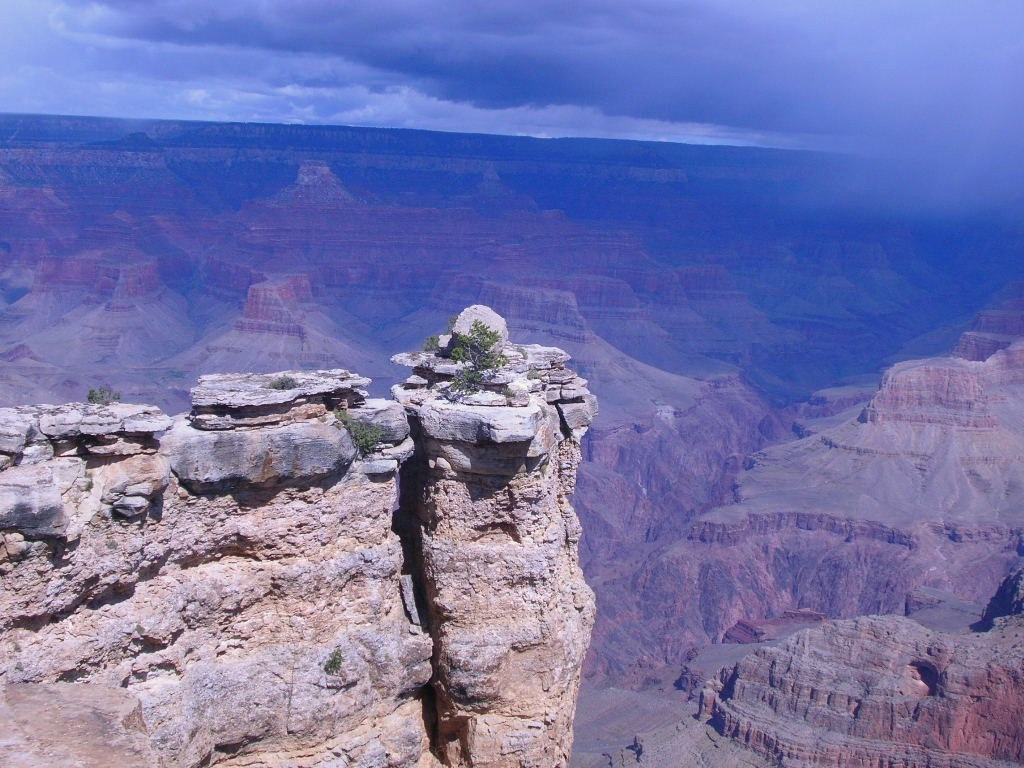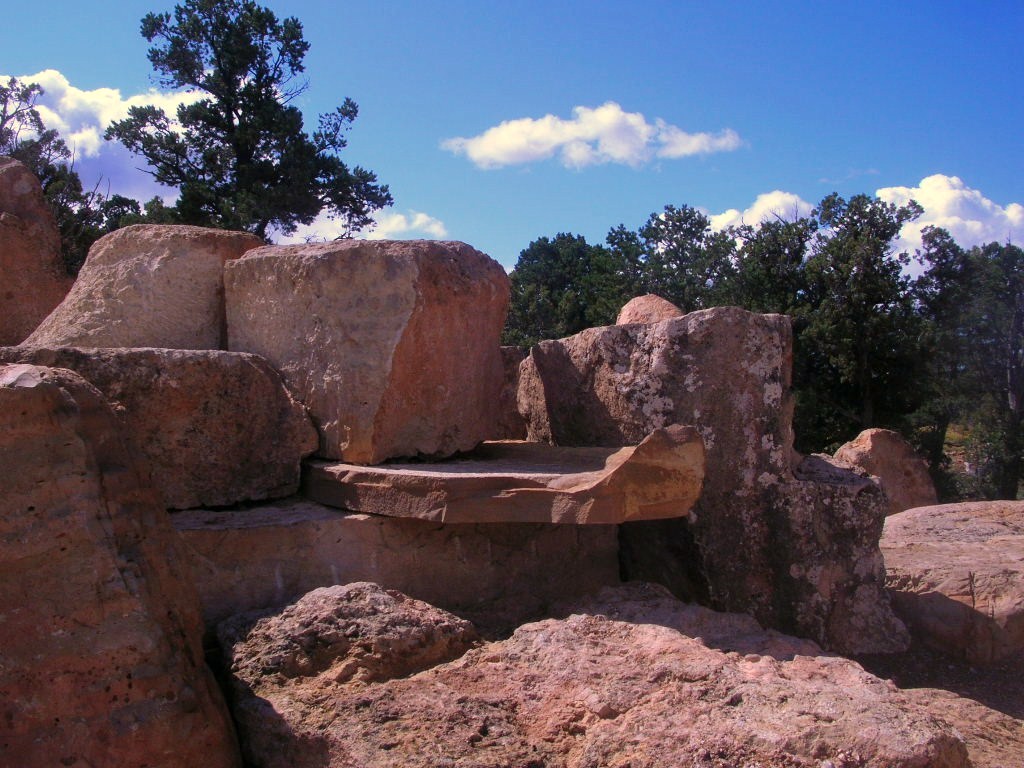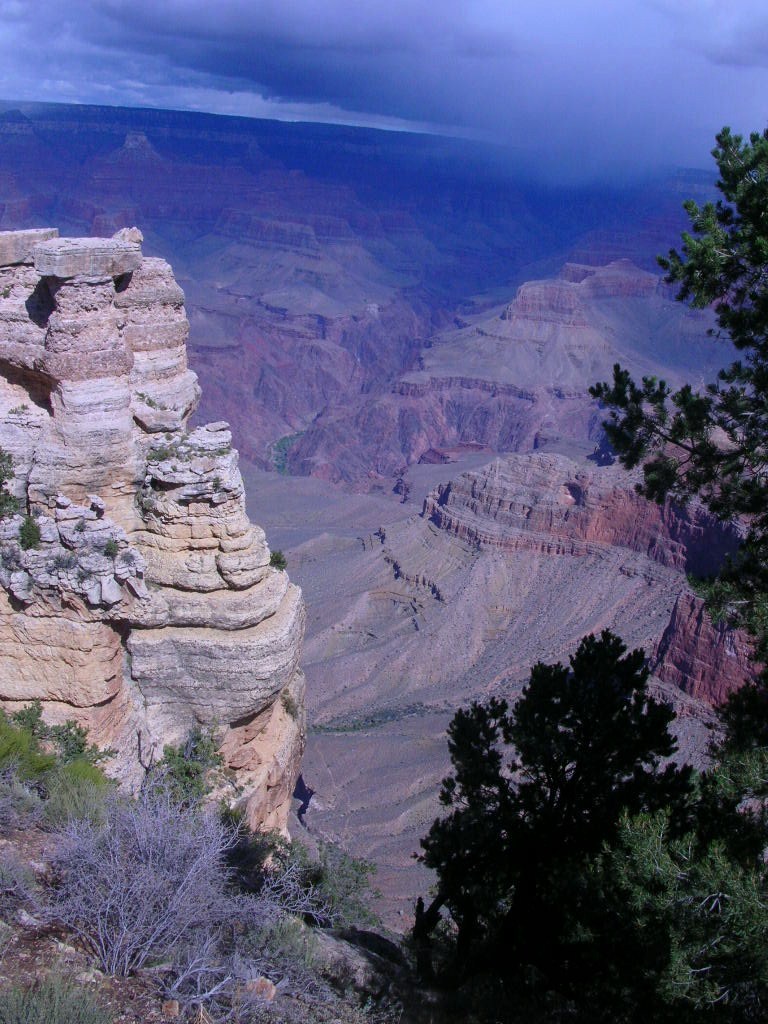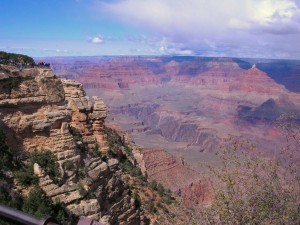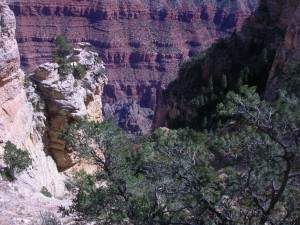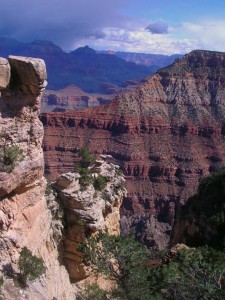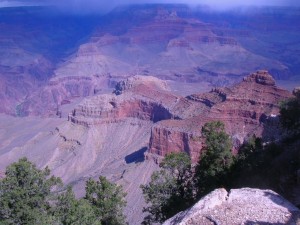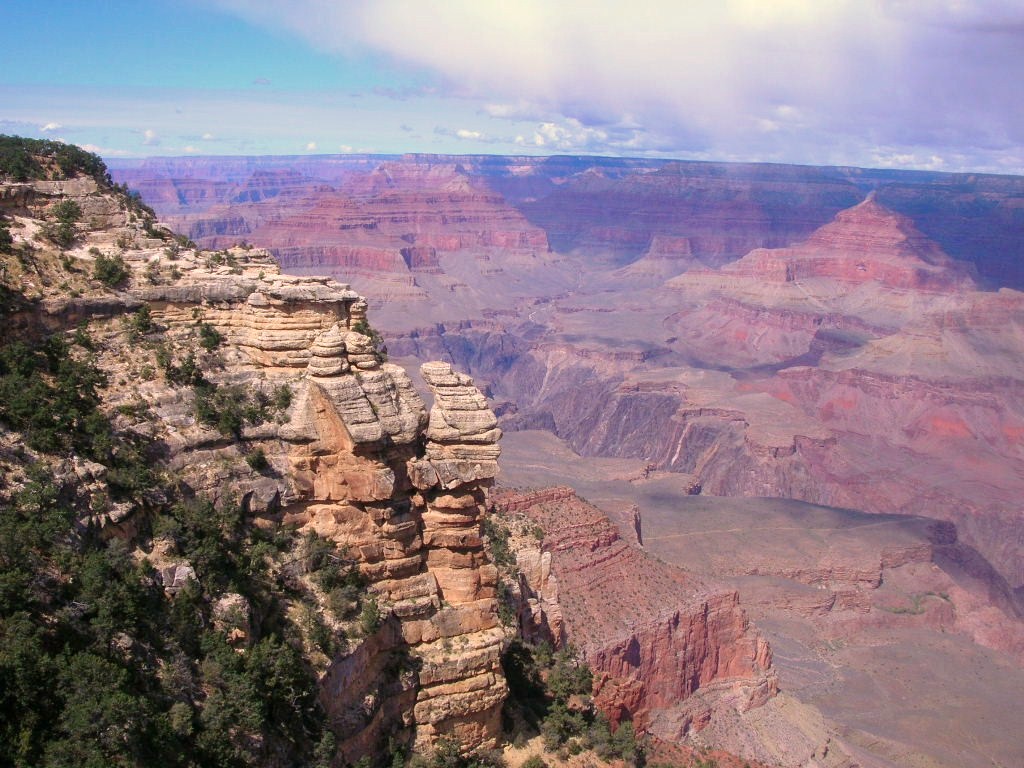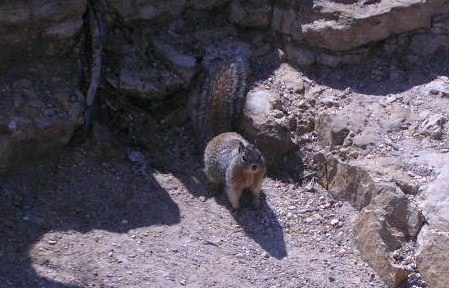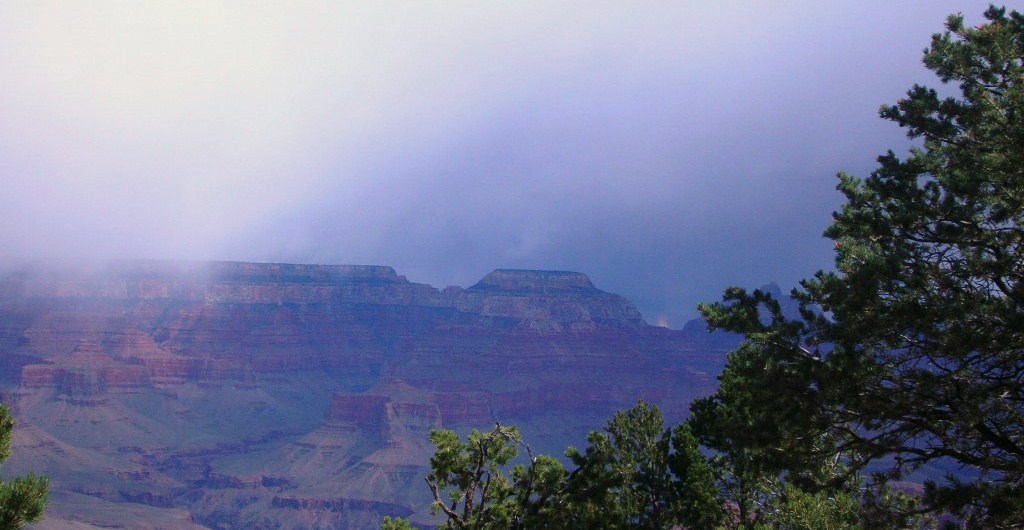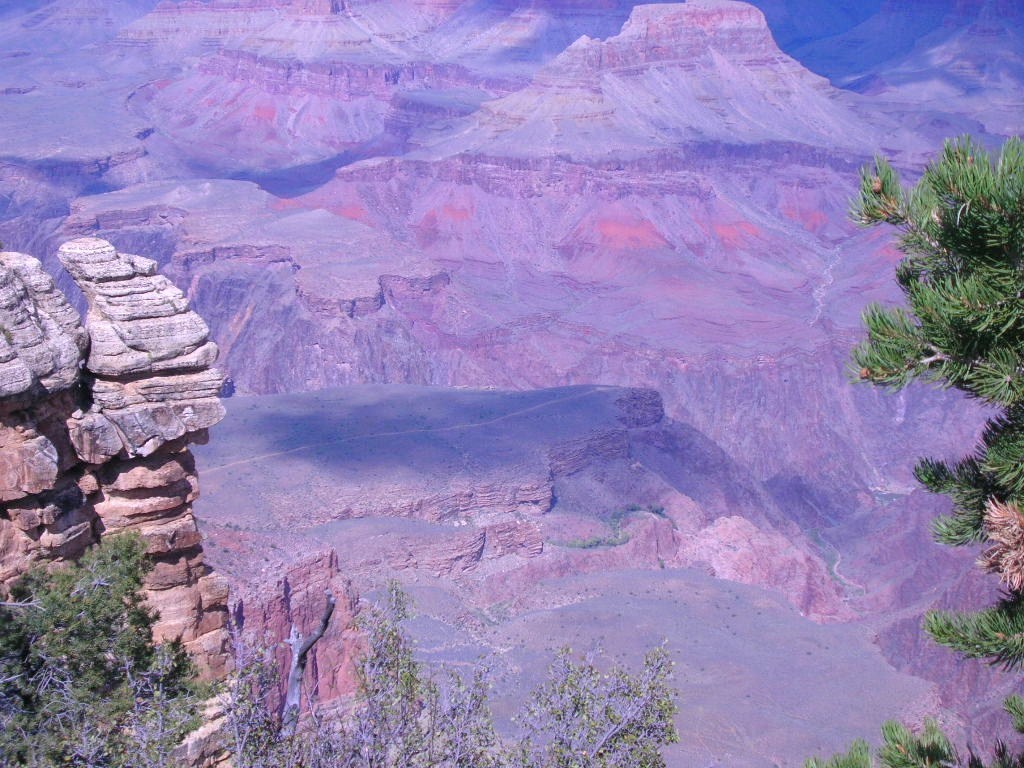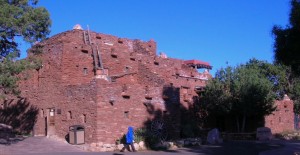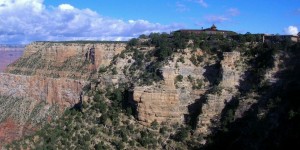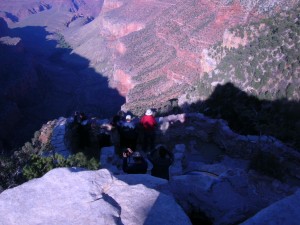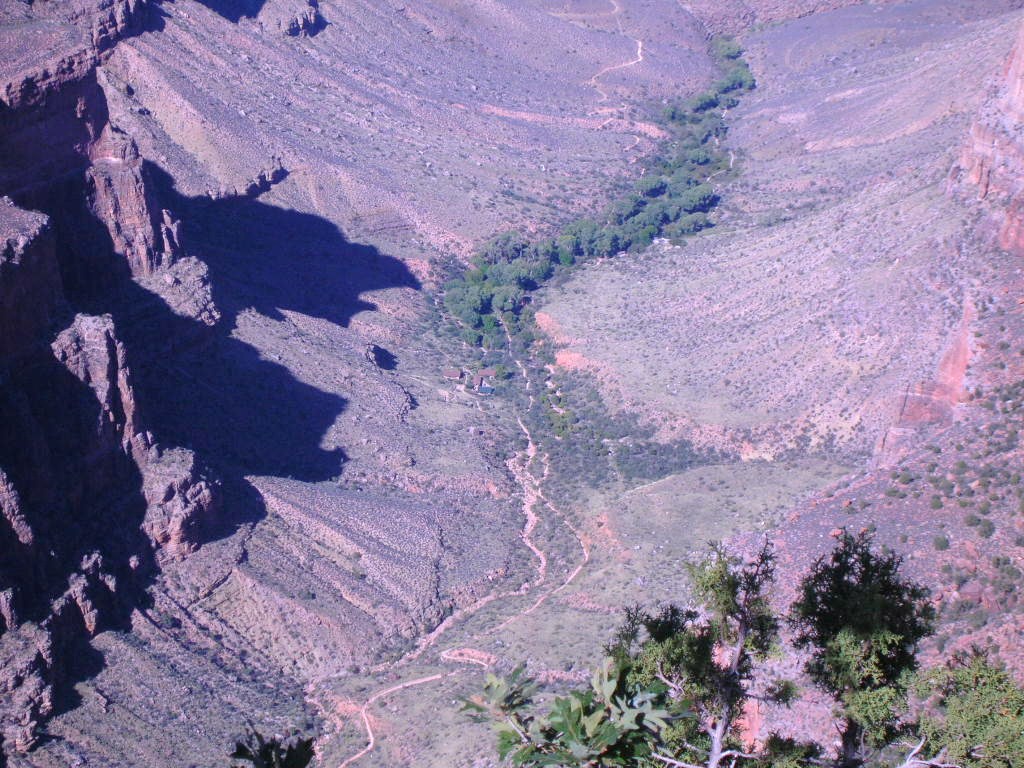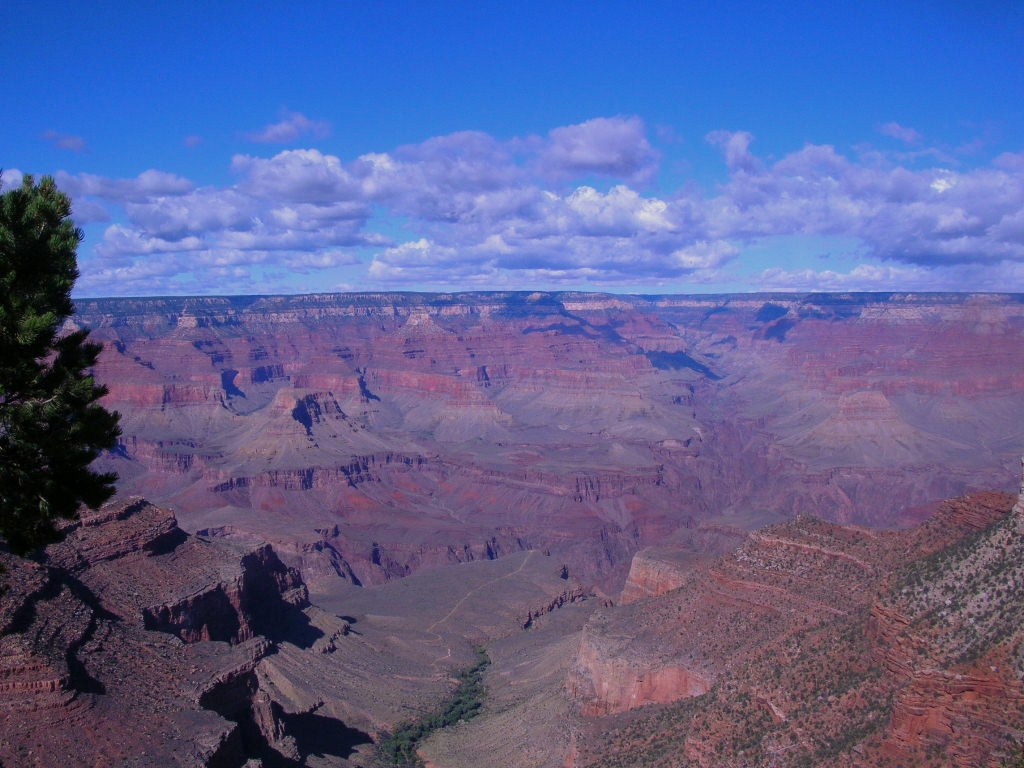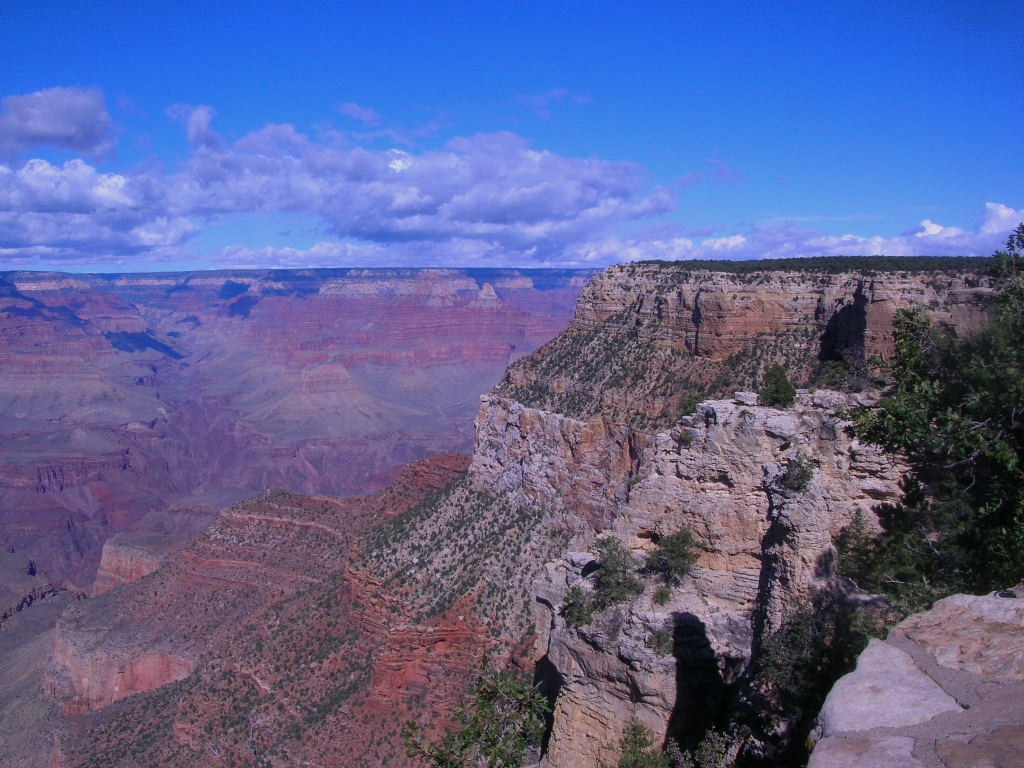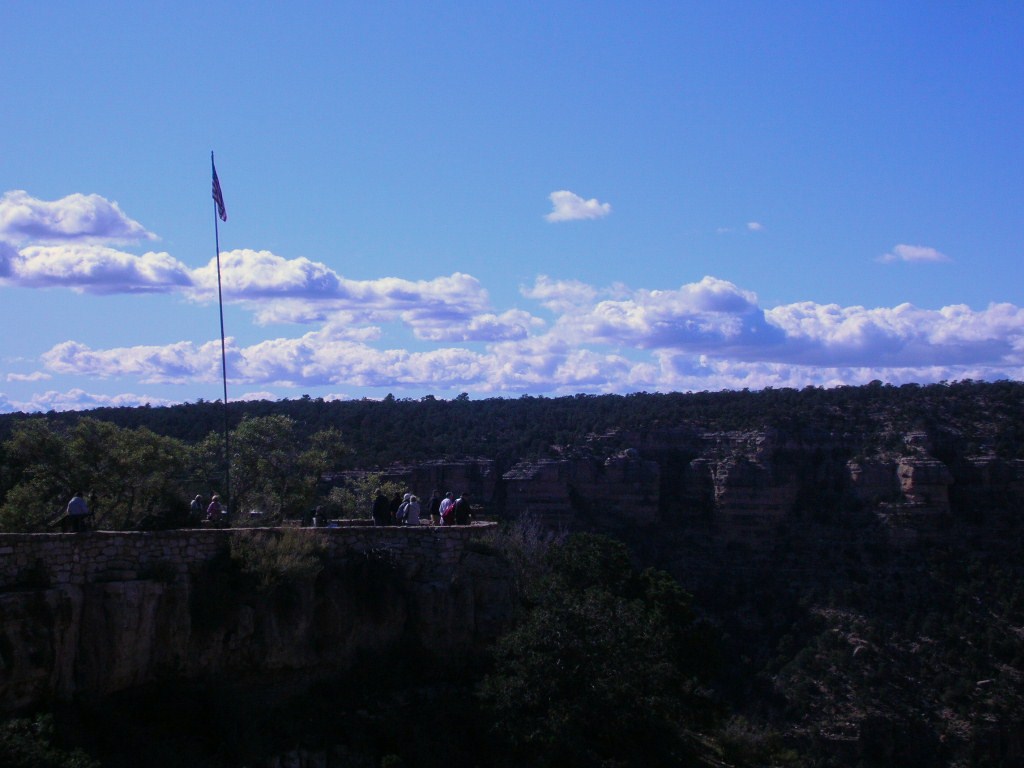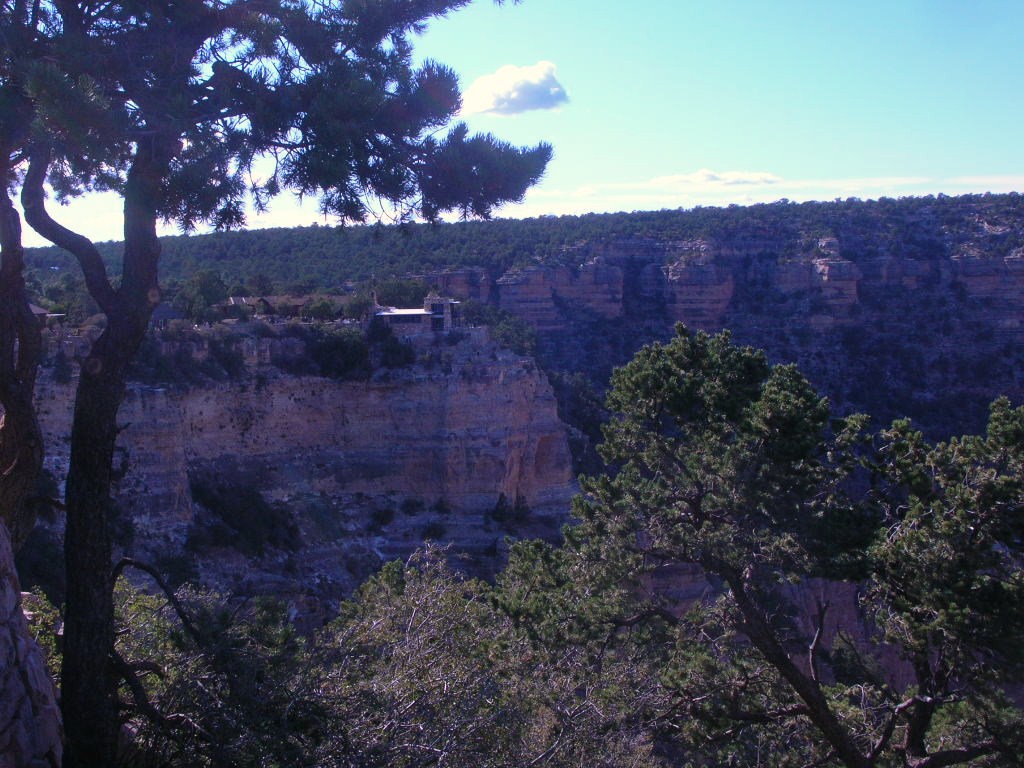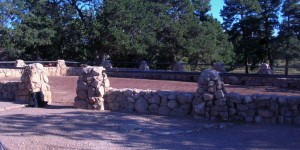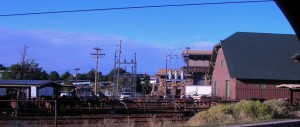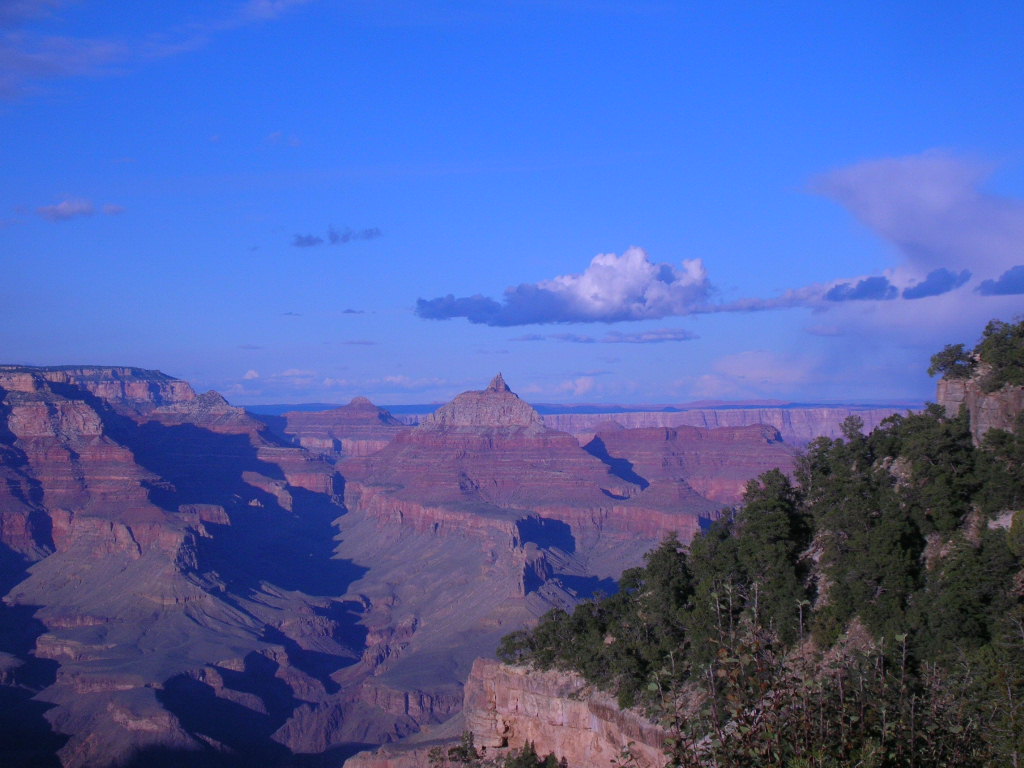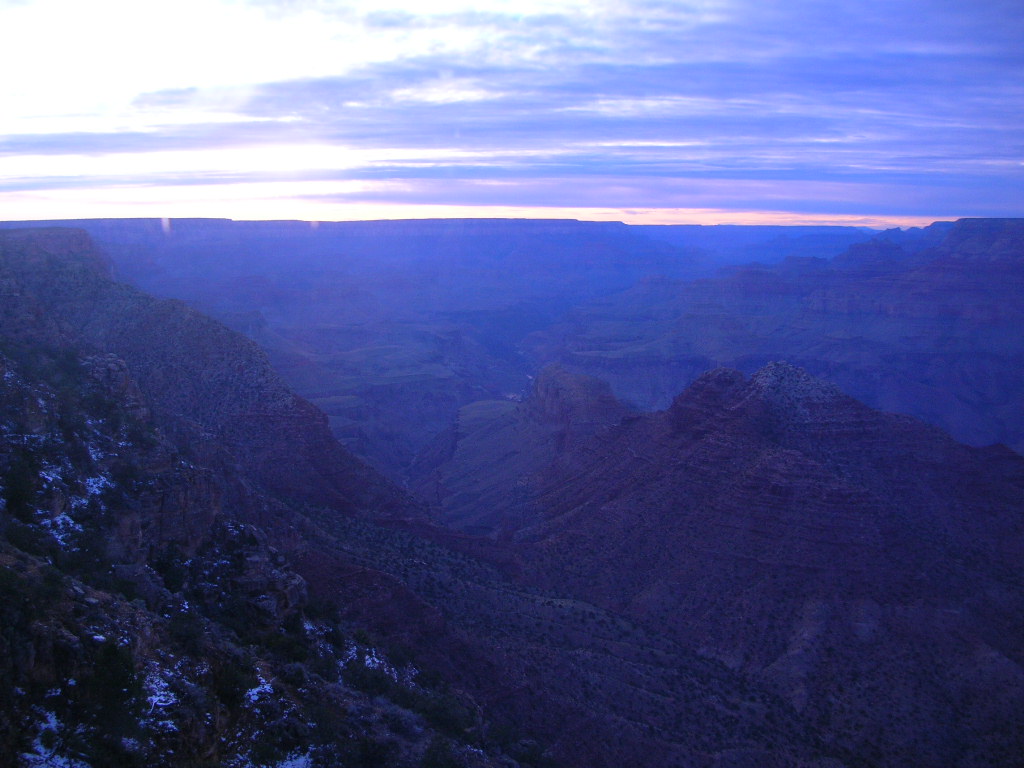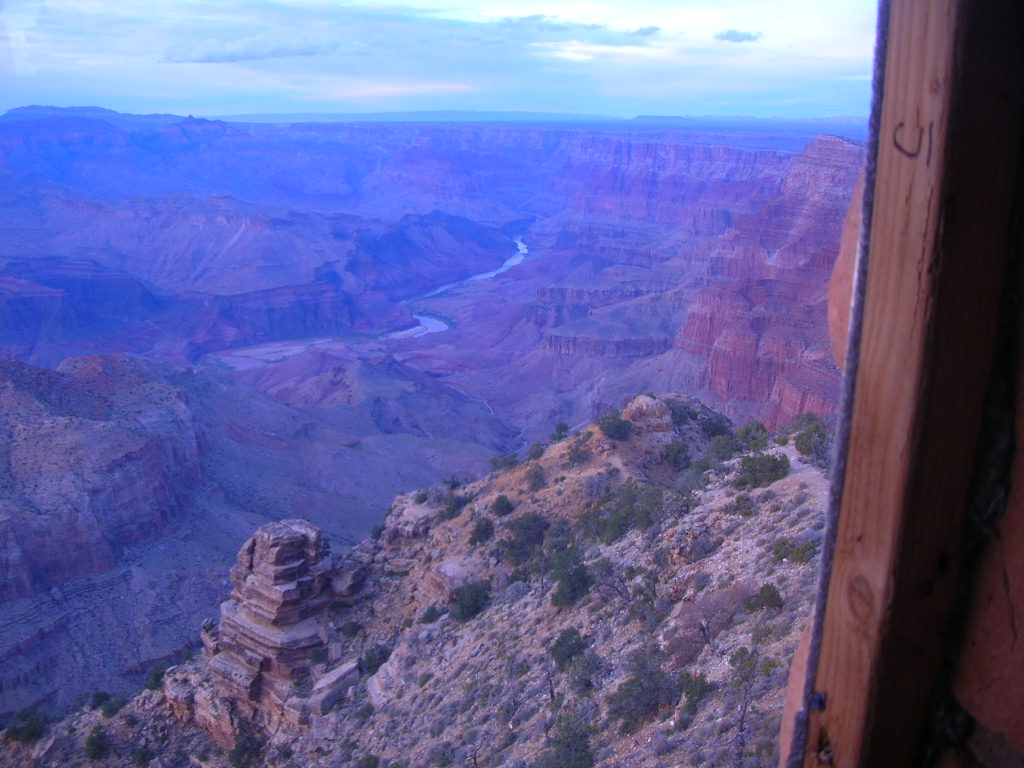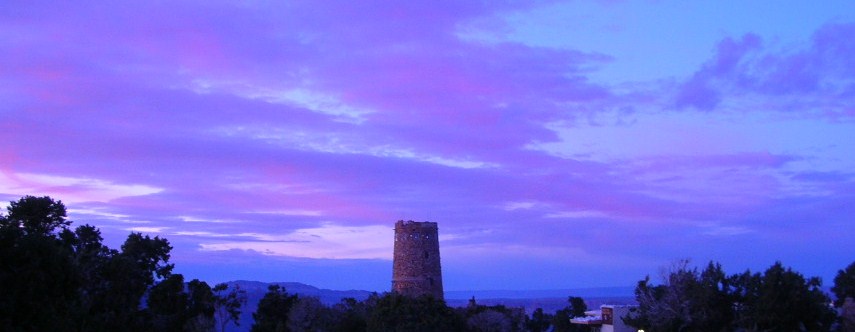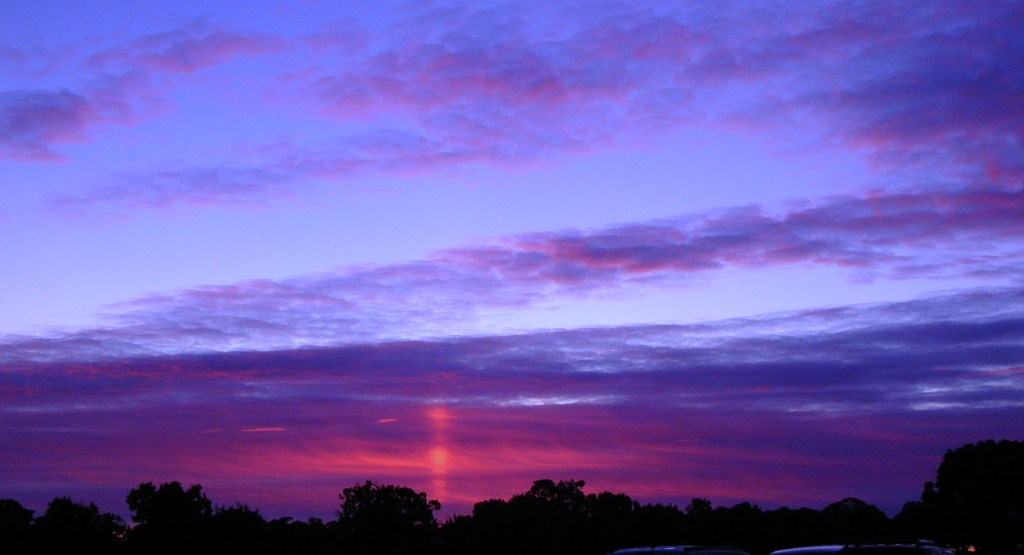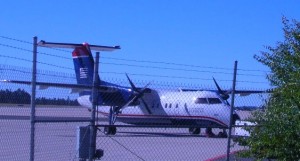Our goal for the day was Jerome and Montezuma Castle as they had been recommended 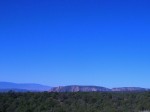 as must see spots. We started our day as we had all of them since arriving in Arizona, by sleeping in and then having breakfast at the hotel. We got into the car and headed down the interstate in part because it seemed to be the most direct route and partially because we had only gone that route in the dark.
as must see spots. We started our day as we had all of them since arriving in Arizona, by sleeping in and then having breakfast at the hotel. We got into the car and headed down the interstate in part because it seemed to be the most direct route and partially because we had only gone that route in the dark.
 The scenery is terrific even at 70 mph but we decided to stop at a scenic view to get a closer look. There were a couple of other groups there including one that was talking to a woman who had a collection of Native American jewelry spread on a cloth on the ground and seemed to be selling it. We briefly glanced at her wares but since nothing particularly caught our eye, we moved on south toward Montezuma Castle National Monument.
The scenery is terrific even at 70 mph but we decided to stop at a scenic view to get a closer look. There were a couple of other groups there including one that was talking to a woman who had a collection of Native American jewelry spread on a cloth on the ground and seemed to be selling it. We briefly glanced at her wares but since nothing particularly caught our eye, we moved on south toward Montezuma Castle National Monument.
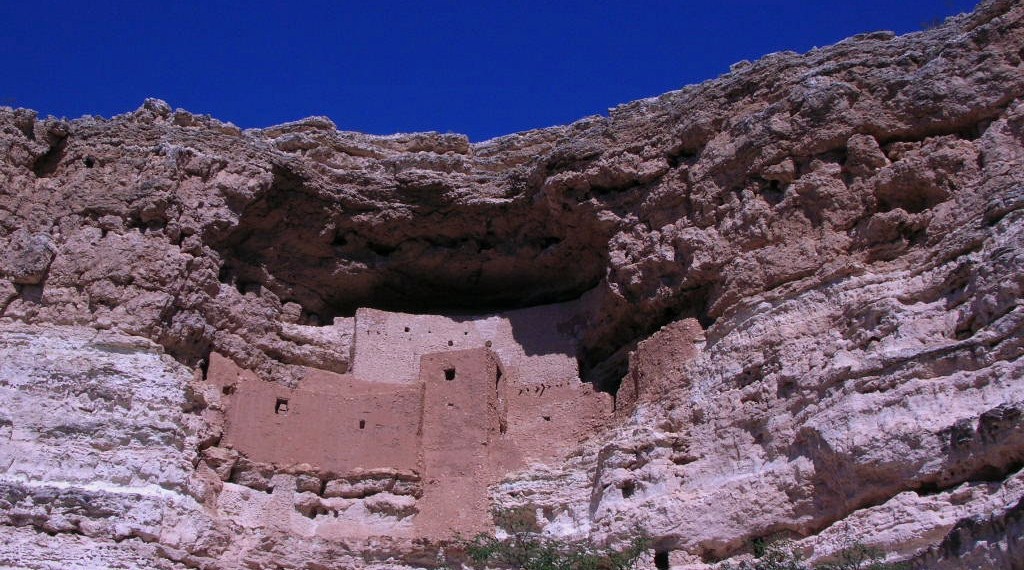 Montezuma Castle has nothing to do with Montezuma and was never a castle. It was given that name by early Europeans who mistakenly believed it to be connected to him and it resembled the high stone structures of Europe. In reality, Montezuma Castle is a cliff
Montezuma Castle has nothing to do with Montezuma and was never a castle. It was given that name by early Europeans who mistakenly believed it to be connected to him and it resembled the high stone structures of Europe. In reality, Montezuma Castle is a cliff 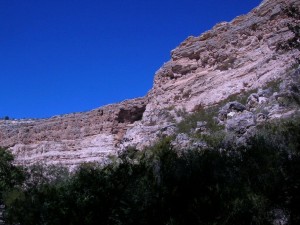 dwelling structure built and occupied by the Sinagua people. It is located alongside the Beaver Creek which allowed them to farm the area.
dwelling structure built and occupied by the Sinagua people. It is located alongside the Beaver Creek which allowed them to farm the area.
Although the Sinagua lived there for 300 years, they disappeared in the 1400s with no sure conclusion as to where they went or why. Hopi legend indicates the Sinagua may have joined them on the mesas to the northeast. 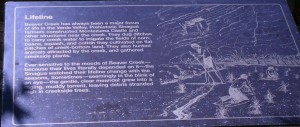 Beaver Creek is fairly tame in our pictures but the dry bed spread for quite some distance and made it clear that flooding was not unheard of.
Beaver Creek is fairly tame in our pictures but the dry bed spread for quite some distance and made it clear that flooding was not unheard of.
The monument operations and facilities are run by the National Park 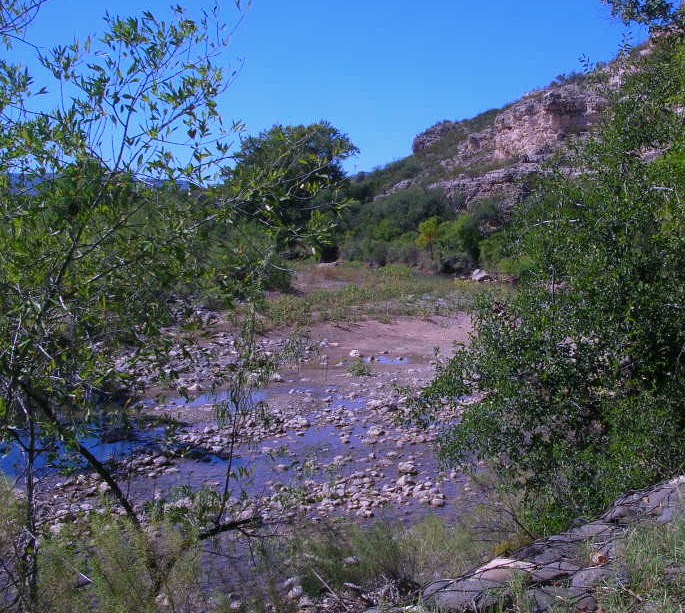
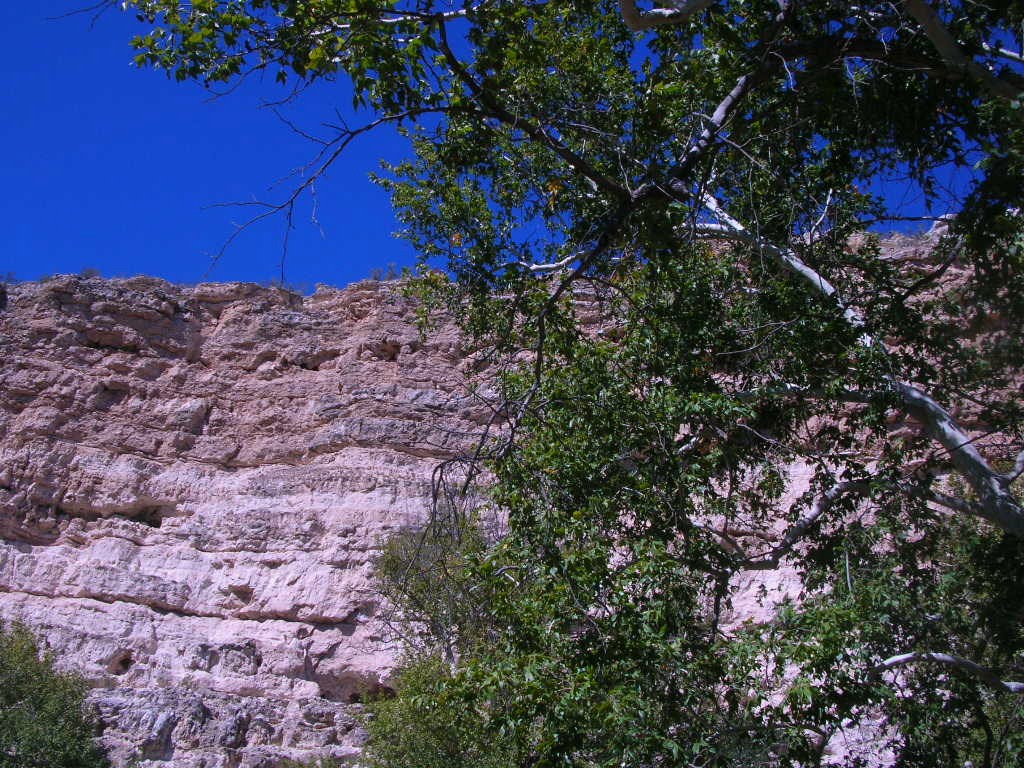
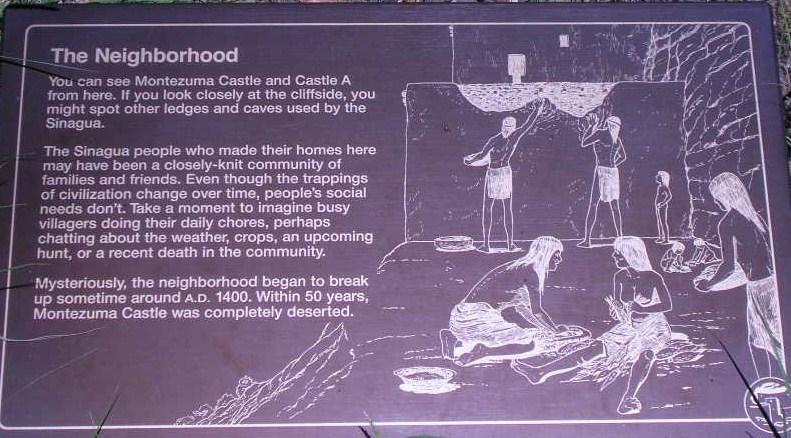
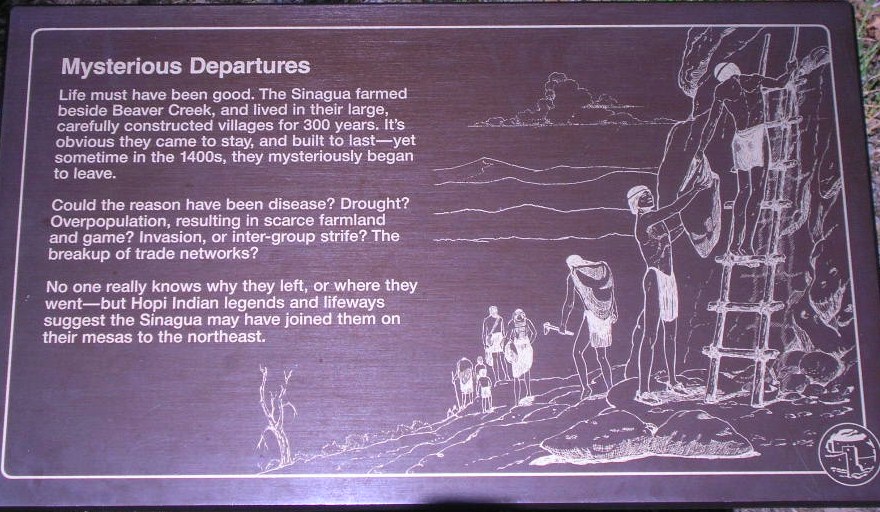
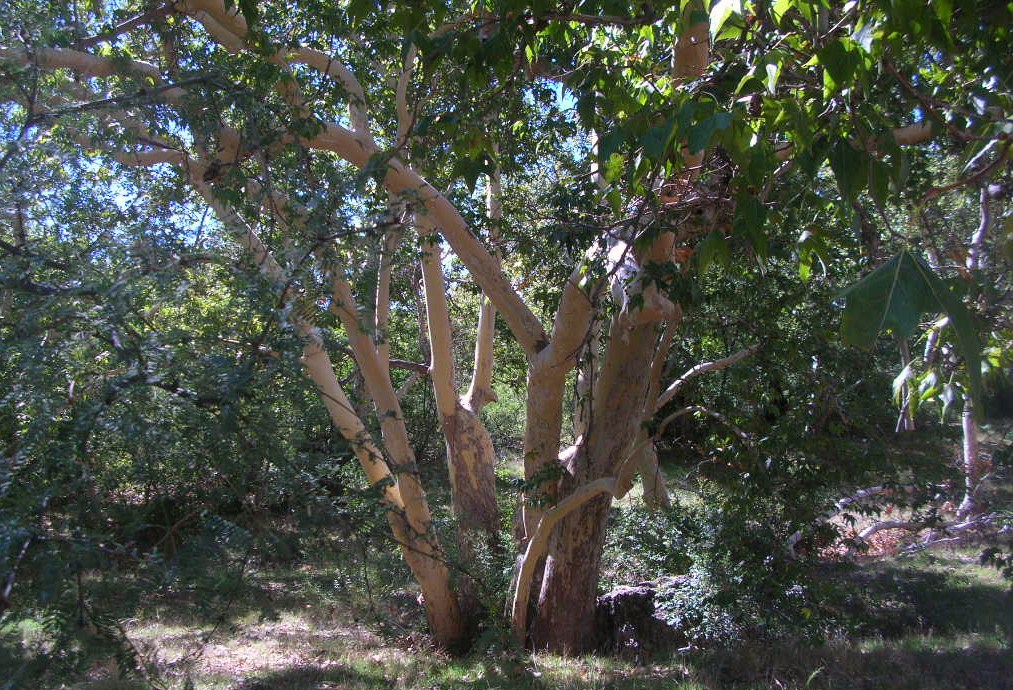 Service so our pass allowed us to enter with no charge. There is a small gift shop where we bought postcards and prickly pear jelly (prickly pear was recommended by cousin Brenda). The exit from Interstate 17 leads past a new casino soon to open.
Service so our pass allowed us to enter with no charge. There is a small gift shop where we bought postcards and prickly pear jelly (prickly pear was recommended by cousin Brenda). The exit from Interstate 17 leads past a new casino soon to open.
Our next destination was Jerome, located high on top of Cleopatra Hill (5,200 feet) between Prescott and Flagstaff. Once known as the wickedest town in the west, Jerome was a copper mining camp, growing from a settlement of tents to a roaring mining community. Four disastrous fires destroyed large sections of the town during its early history.
Founded in 1876, Jerome was once the fourth largest city in the Arizona Territory. The population peaked at 15,000 in the 1920’s. The Depression of the 1930’s slowed the mining operation and the claim went to Phelps Dodge, who holds the claim today. World War II brought increased demand for copper, but after the war, demand slowed. Dependent on the copper market, Phelps Dodge Mine closed in 1953. The remaining 50 to 100 hardy souls promoted the town as a historic ghost town. In 1967 Jerome was designated a National Historic District by the federal government. Today Jerome is a thriving tourist and artist community with a population of about 450.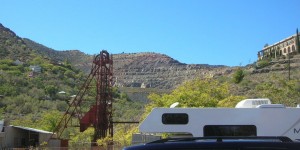
Jerome sits above what was the largest copper mine in Arizona and produced 3 million pounds of copper per month. Men and women from all over the world made their way to Arizona to find work and maybe a new way of life. Today the mines are silent, and Jerome has become the largest ghost town in America.
Jerome’s personality has changed dramatically in the past 30 years. It includes a modicum of artists, craft people, musicians, writers, hermits, bed and breakfast owners, and fallen-down building landlords.
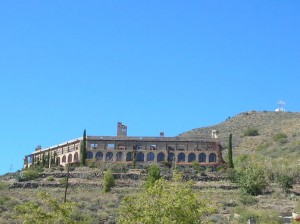 The Douglas Mansion has been an eye-catching landmark in Jerome since 1916, when James S. Douglas built it on the hill just above his Little Daisy Mine.
The Douglas Mansion has been an eye-catching landmark in Jerome since 1916, when James S. Douglas built it on the hill just above his Little Daisy Mine.
Douglas designed the house as a hotel for mining officials and investors as well as for his own family. It featured a wine cellar, billiard room, marble shower, steam heat, and, much ahead of its time, a central vacuum system. Douglas was most proud of the fact that the house was constructed of adobe bricks that were made on the site.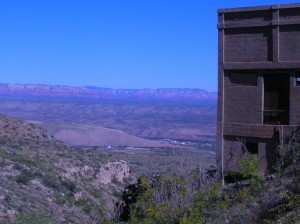
He also built the Little Daisy Hotel near the mine as a dormitory for the miners. The concrete structure still stands.
This former home is now a museum devoted to history of the Jerome area and the Douglas family and is open Thursday to Monday each week as a state park. Unfortunately, our visit occurred on Tuesday.
Our touring included a visit to the headshaft of the Audrey mine, separately open by the Jerome Historical Society. 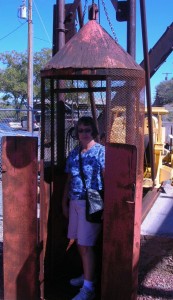 After looking around here a bit, we headed back into town where we visited several galleries (where the view out the window was as impressive as some of the pieces they had for sale).
After looking around here a bit, we headed back into town where we visited several galleries (where the view out the window was as impressive as some of the pieces they had for sale).
For lunch, we visited an English Kitchen barbecue where we were told told that only the brisket was available at this hour. While we enjoy barbecue, brisket isn’t usually our first choice but theirs was excellent. Glad we decided to go that way.
After lunch we walked along the next higher street past the firestation (where they had a beautifully restored 1928 Dodge firetruck tucked inside the garage) and then 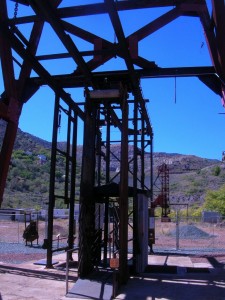
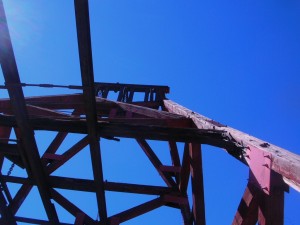
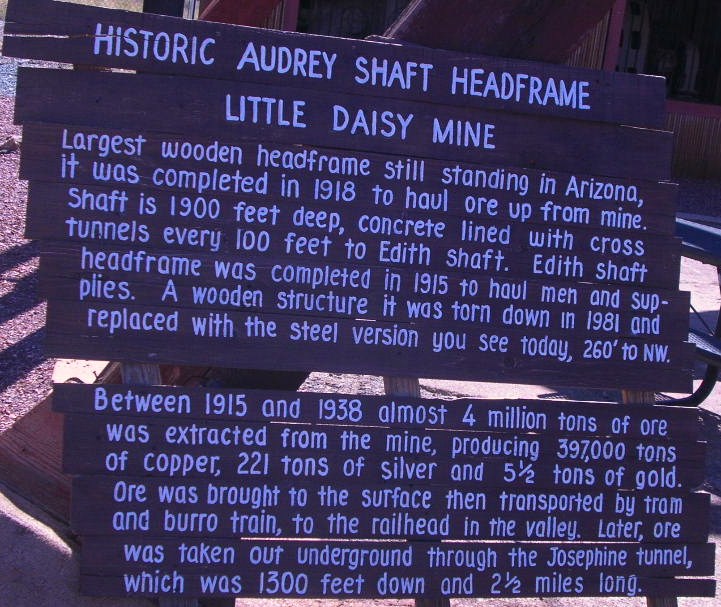
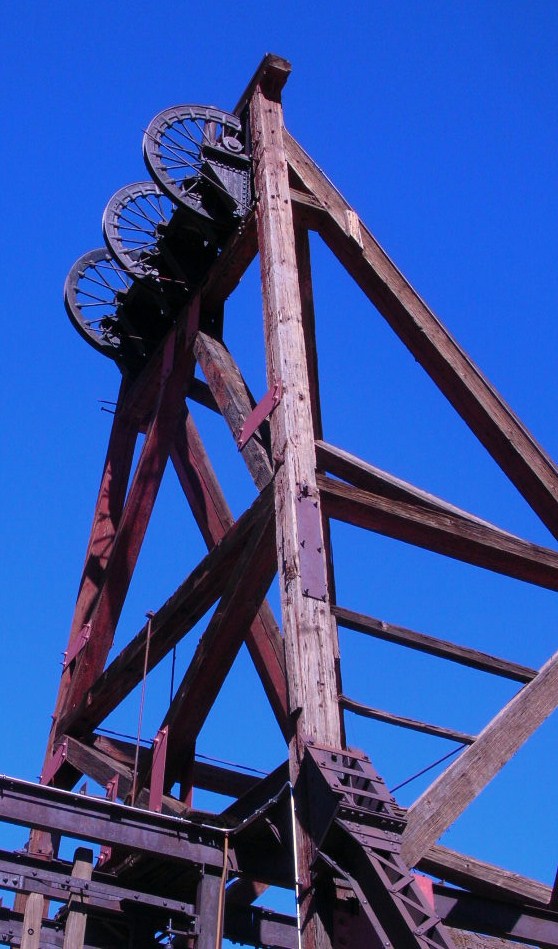 climbed the stairs again to the next higher street. After we got home, Keith’s nephew advised us that we should have checked out the haunted hotel which we never even saw. A little more wandering on the streets and we headed back to the car and back down the hill. (There was a really nice looking 1948 Ford F1 pickup with a for sale sign but we decided that someone back home would have issues if we sent another email saying “Dad bought a truck” while on vacation.)
climbed the stairs again to the next higher street. After we got home, Keith’s nephew advised us that we should have checked out the haunted hotel which we never even saw. A little more wandering on the streets and we headed back to the car and back down the hill. (There was a really nice looking 1948 Ford F1 pickup with a for sale sign but we decided that someone back home would have issues if we sent another email saying “Dad bought a truck” while on vacation.)
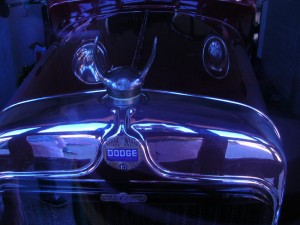
The Firetruck
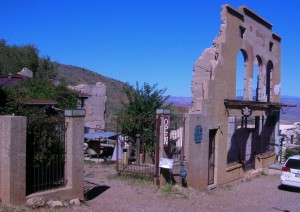
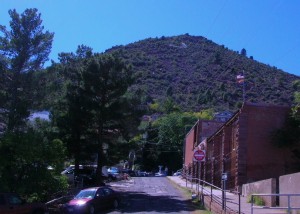
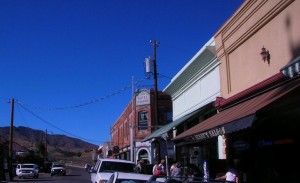
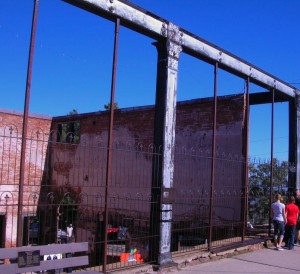
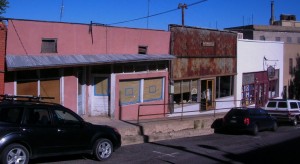
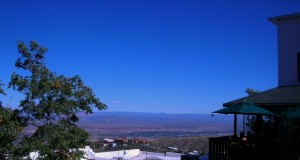
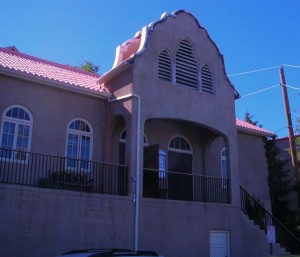
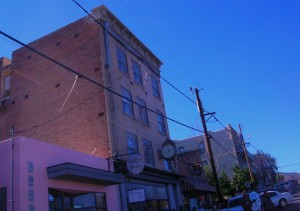
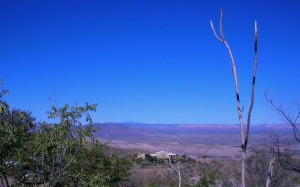 Before we got back to the interstate, we noted on the map that the Tuzigoot National Monument was nearby and with daylight left, we wanted to check it out as well. Betty had traveled to this area years before and remembered touring dwellings that you could walk through, not just view from a distance as we had done at Montezuma Castle earlier in the day. Perhaps Tuzigoot was that place? The historic site name derives from Apache term for “crooked water” Pronunciations: TOO-zi-goot
Before we got back to the interstate, we noted on the map that the Tuzigoot National Monument was nearby and with daylight left, we wanted to check it out as well. Betty had traveled to this area years before and remembered touring dwellings that you could walk through, not just view from a distance as we had done at Montezuma Castle earlier in the day. Perhaps Tuzigoot was that place? The historic site name derives from Apache term for “crooked water” Pronunciations: TOO-zi-goot
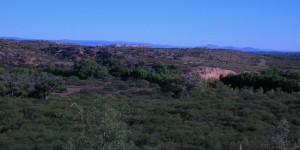 Tuzigoot was a pueblo village constructed by the Sinaguas (the same people as at Montezuma Castle) and was one of 50 pueblo villages in the Verde Valley. Like Montezuma Castle, it had apparently been occupied from 1125 to 1425.
Tuzigoot was a pueblo village constructed by the Sinaguas (the same people as at Montezuma Castle) and was one of 50 pueblo villages in the Verde Valley. Like Montezuma Castle, it had apparently been occupied from 1125 to 1425.
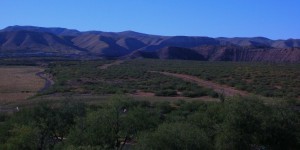 Being built on a pueblo, the structures were less vertical and more horizontal but served similar purposes with storage and preparation areas near dwelling sections. It was built with consideration for security from invaders with many entrances coming from the roof and a view of anyone who might approach. There were approximately 110 rooms. One factor that struck us as odd was
Being built on a pueblo, the structures were less vertical and more horizontal but served similar purposes with storage and preparation areas near dwelling sections. It was built with consideration for security from invaders with many entrances coming from the roof and a view of anyone who might approach. There were approximately 110 rooms. One factor that struck us as odd was 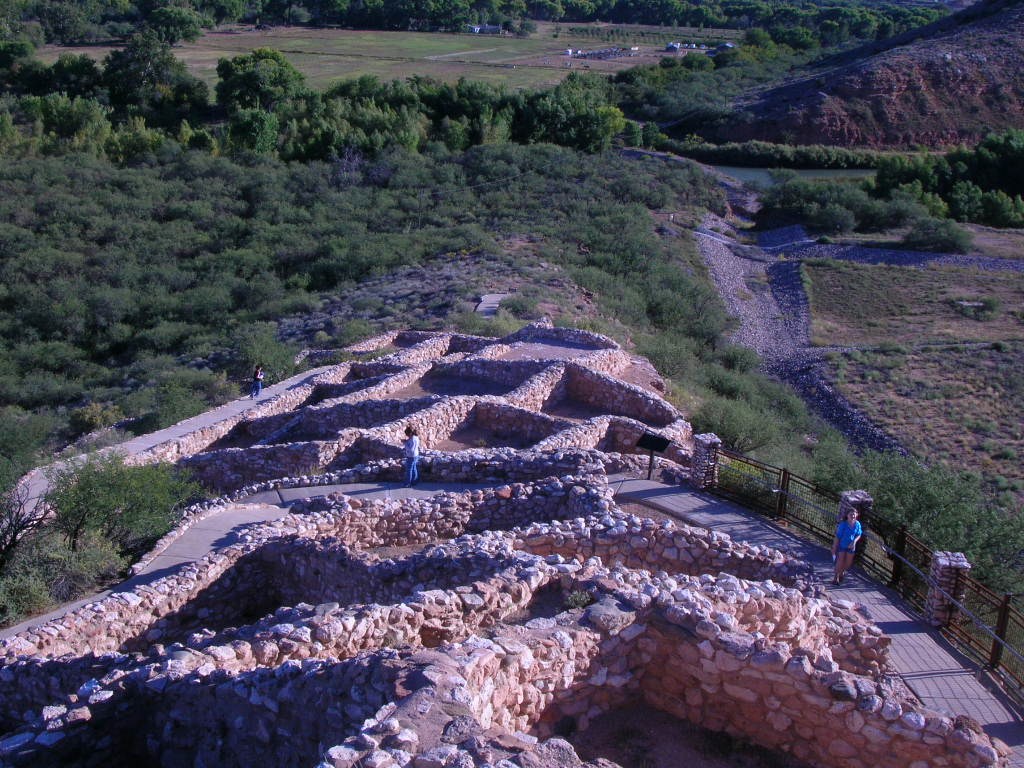 that apparently children who died were buried within the confines of the dwellings while the elderly were buried outside of the village. The only explanatory bit we got of that was a desire to keep the spirit of the children with the family.
that apparently children who died were buried within the confines of the dwellings while the elderly were buried outside of the village. The only explanatory bit we got of that was a desire to keep the spirit of the children with the family.
Evidence exists of farming efforts including redirection of the water for irrigation purposes. The climb was more gentle and the view of the surrounding valley was excellent. 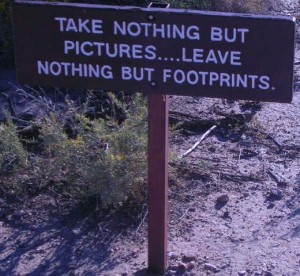 There were cautions to stay on the pathways to minimize damage. One particular sign which somehow escaped our camera advised visitors to stay on the path with a picture of a rattlesnake. We had to wonder if that meant that the rattlesnakes would stay off the path!
There were cautions to stay on the pathways to minimize damage. One particular sign which somehow escaped our camera advised visitors to stay on the path with a picture of a rattlesnake. We had to wonder if that meant that the rattlesnakes would stay off the path!
It is not known why the Sinagua left the area. Some clues that they joined the Hopi to the northeast exists but it is non-conclusive.
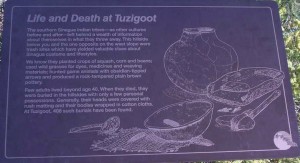
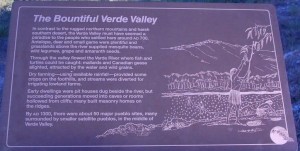
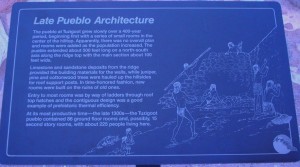
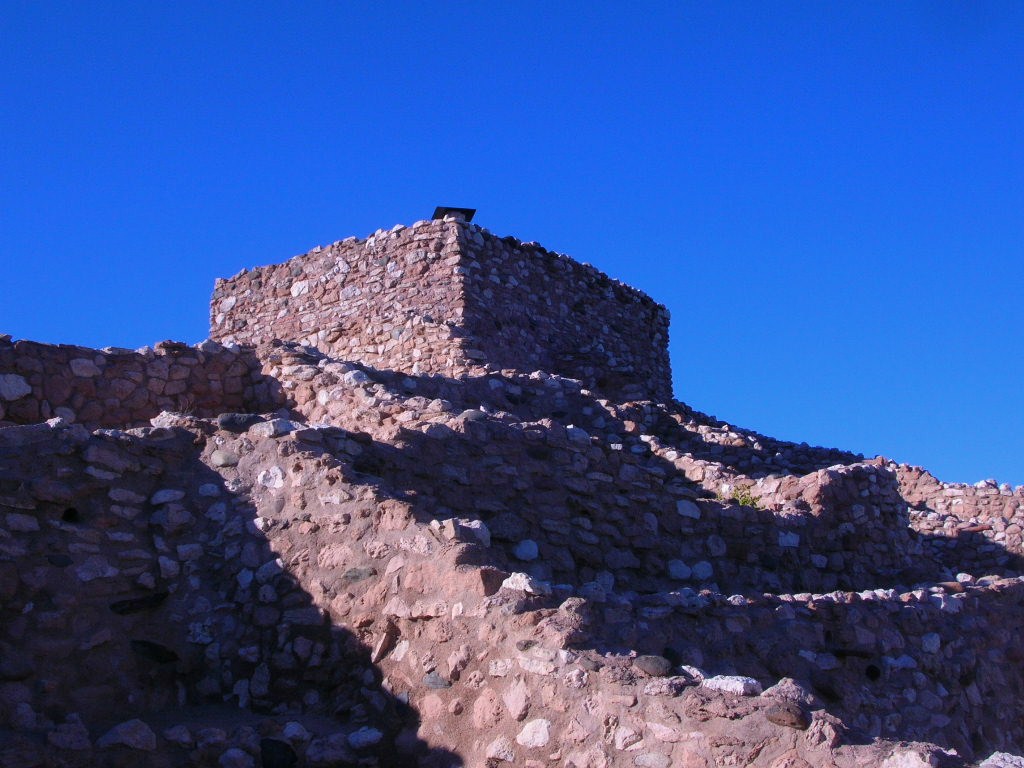
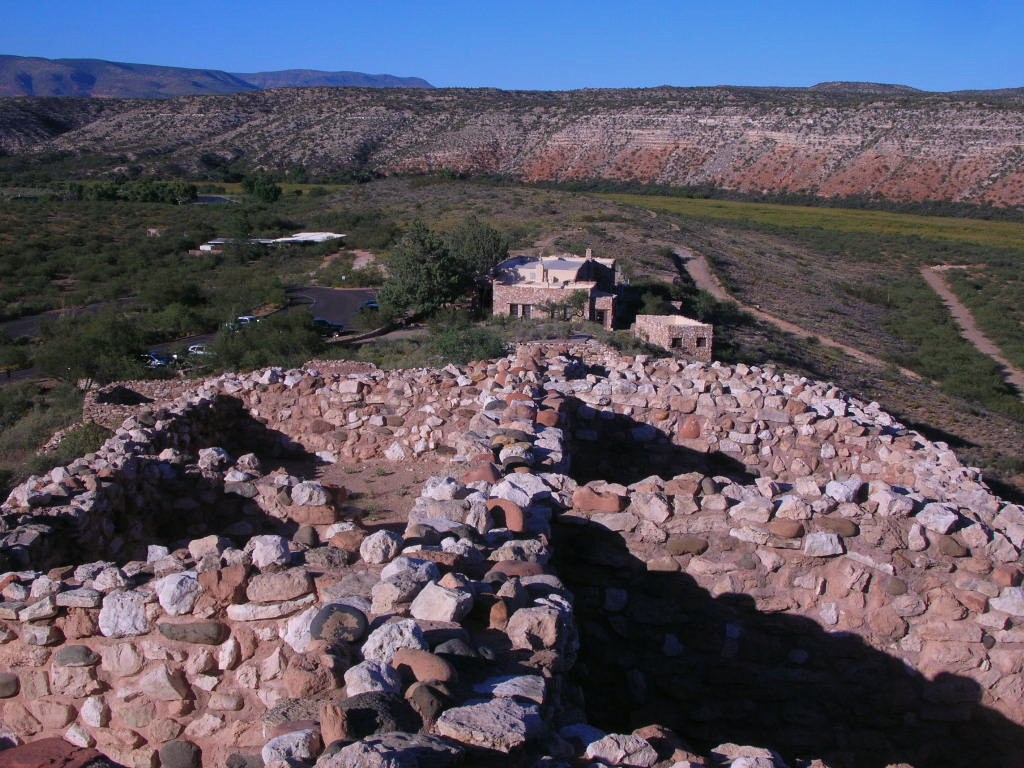
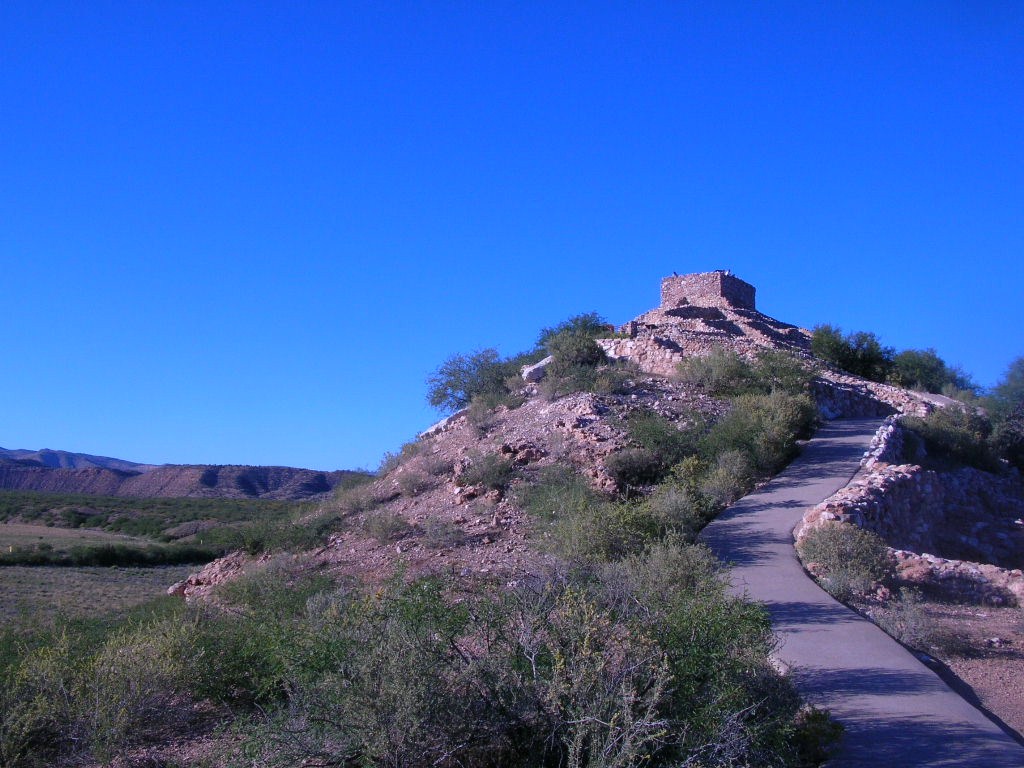
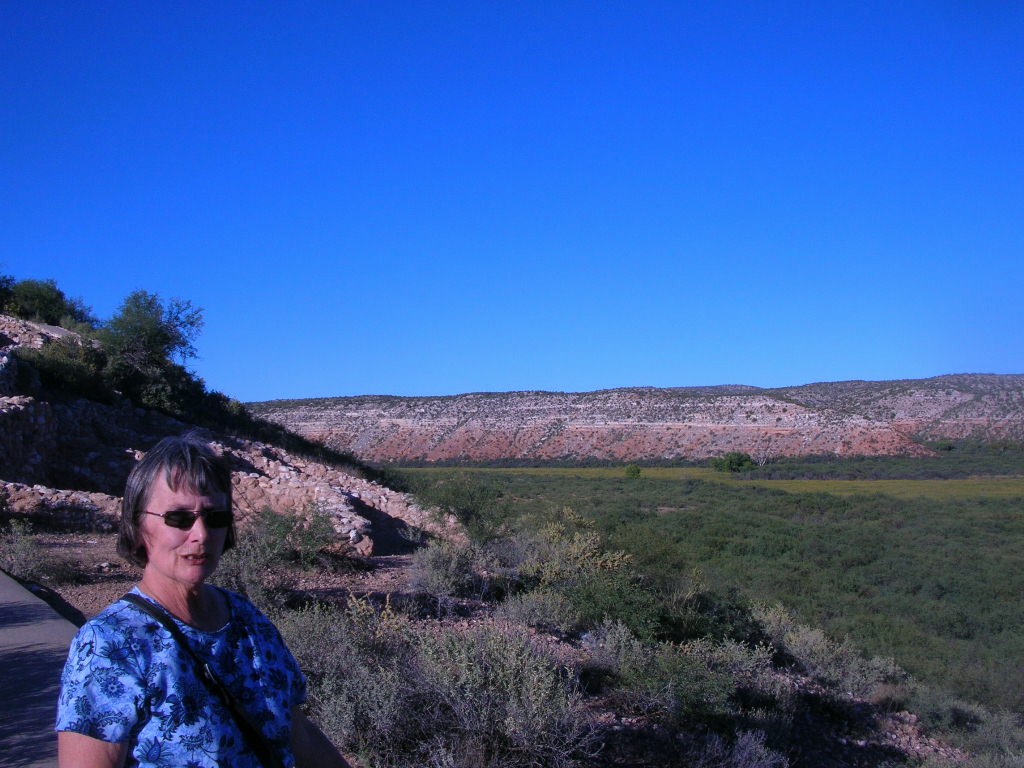
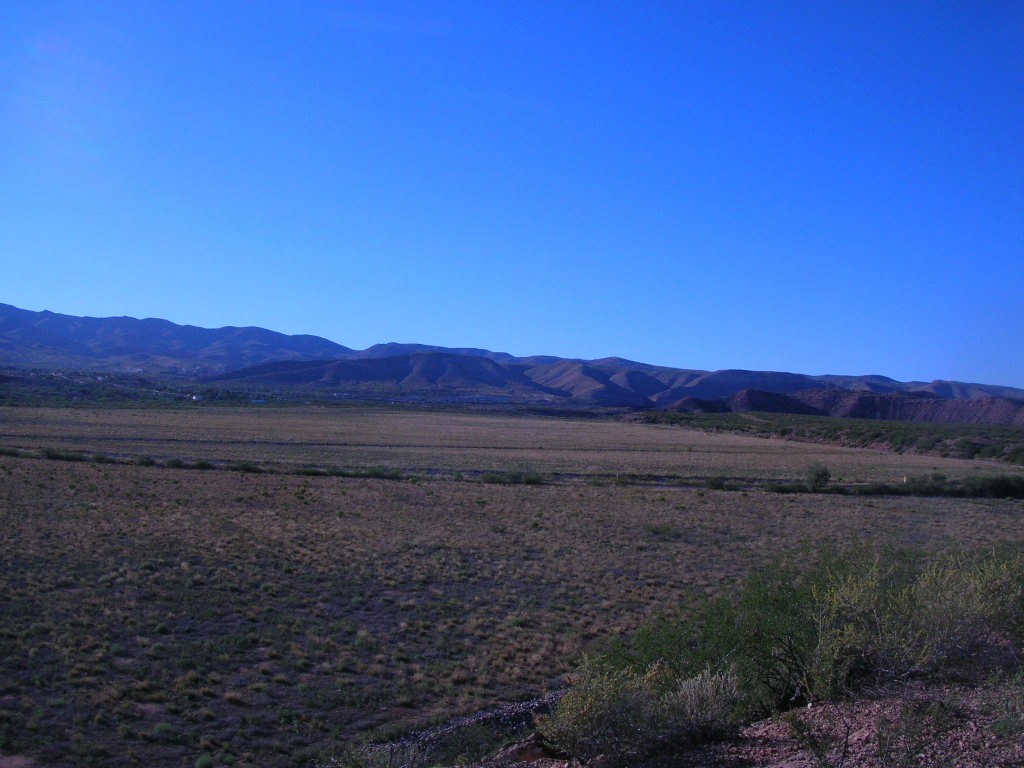
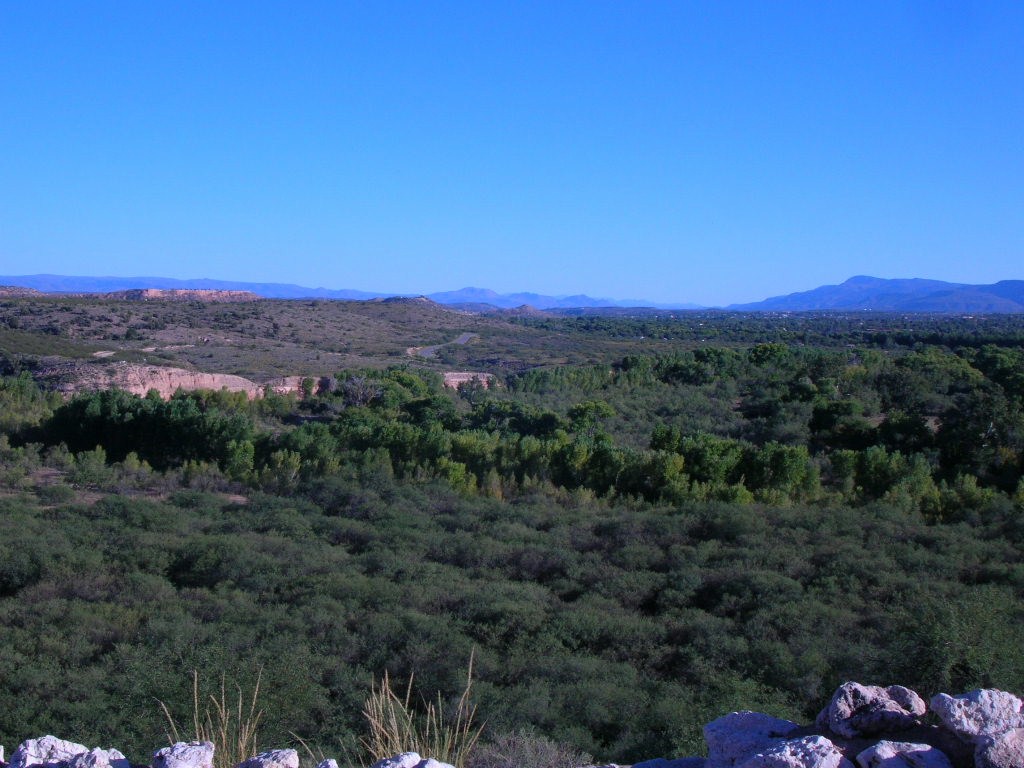
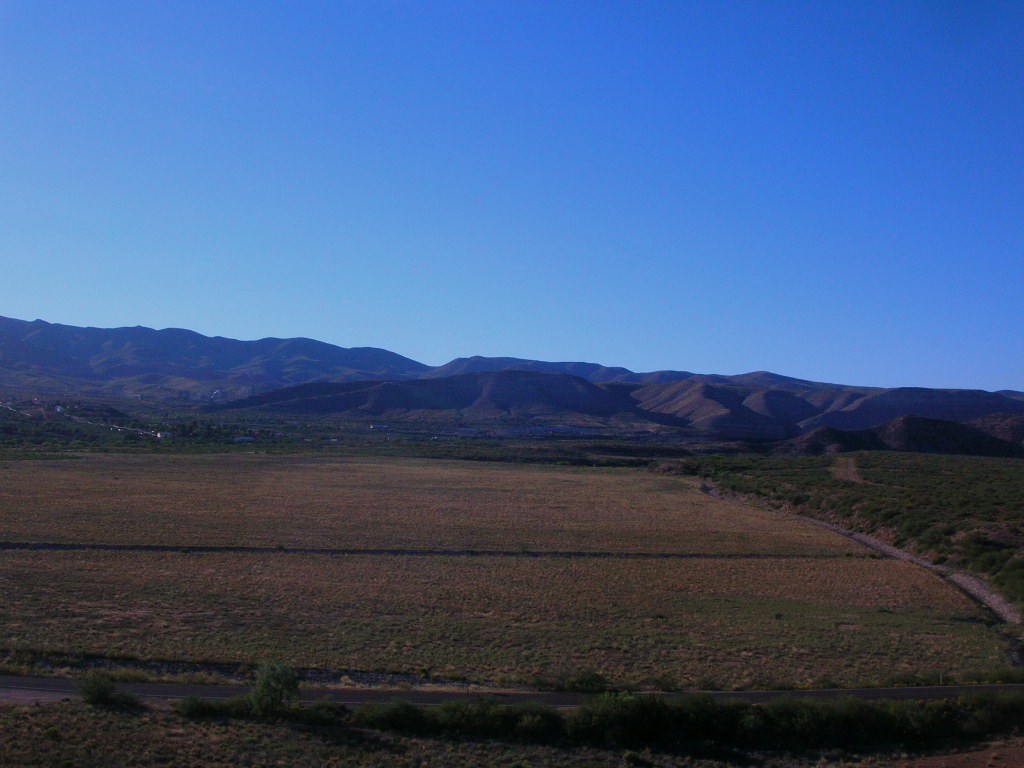
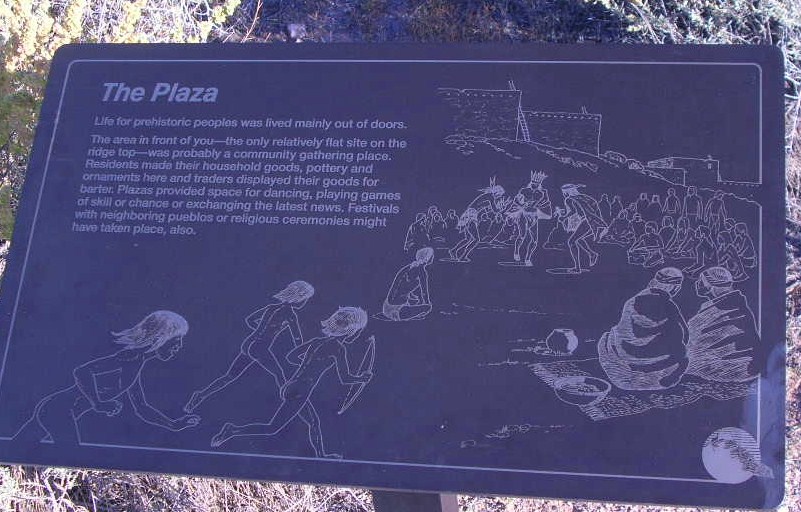
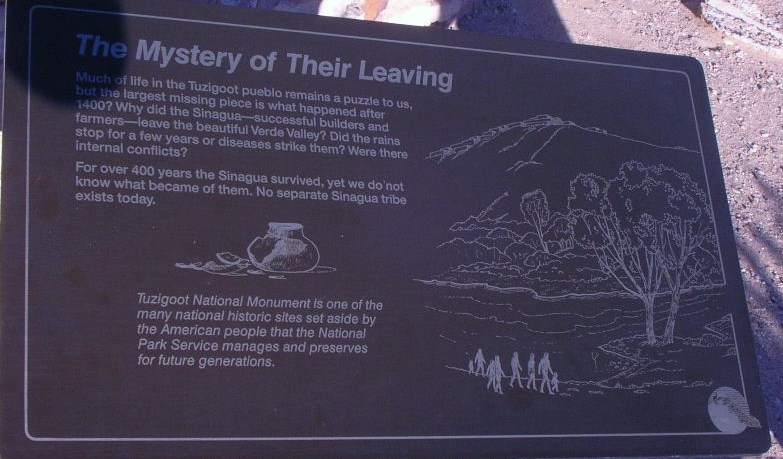 We left Tuzigoot and headed back to the interstate and towards Flagstaff. Just before dark, we stopped at a McDonald’s for a coffee break. We discovered that we only would get the senior discount on coffee if we specifically asked for it. We had been getting the discount earlier in our trip without mentioning it. While we appreciate it and can understand the desire to avoid offending those who didn’t wish to be identified as seniors, a little consistency would make it easier on us “old people”.
We left Tuzigoot and headed back to the interstate and towards Flagstaff. Just before dark, we stopped at a McDonald’s for a coffee break. We discovered that we only would get the senior discount on coffee if we specifically asked for it. We had been getting the discount earlier in our trip without mentioning it. While we appreciate it and can understand the desire to avoid offending those who didn’t wish to be identified as seniors, a little consistency would make it easier on us “old people”.
We returned to Flagstaff and once again went to CoCo’s for dinner but we went for something a bit more filling than the soup and salad of the night before. The food was excellent and we recommend it if you are in the area.
